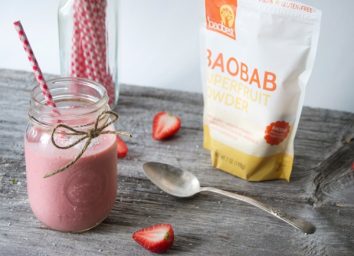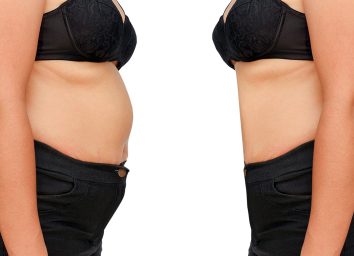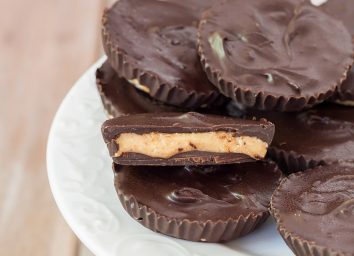50 Clean Eating Tips for Weight Loss
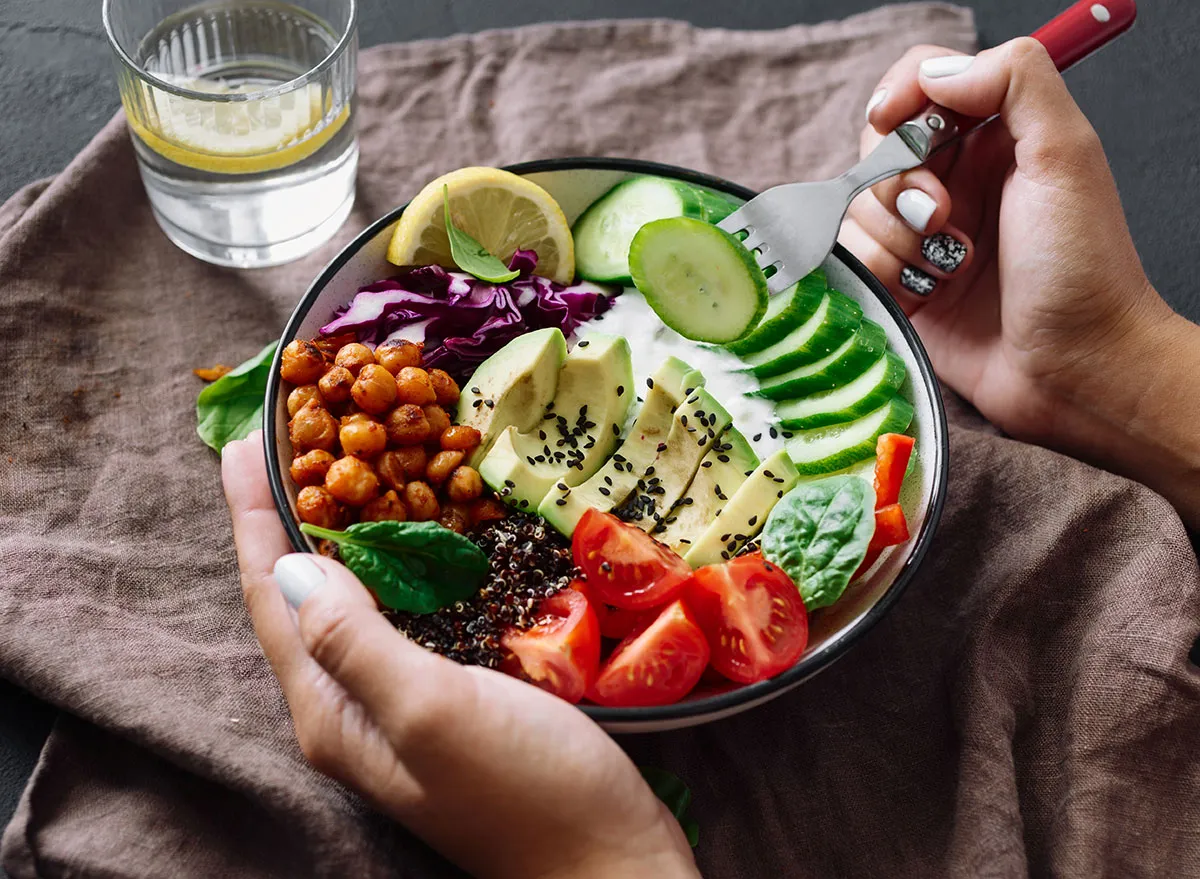
“Would it be safe to assume that you would fill up a fancy and finely-tuned Maserati with premium fuel?” asks Lisa Davis, PhD, LDN, Chief Nutrition Officer at Terra’s Kitchen. You betcha. So now let’s turn to your body. For it to function optimally, what type of fuel should you fill it up with? Enter: Clean eating. “View a clean eating plan as premium fueling for the body that features nutrient-dense, portion-controlled, antioxidant-rich foods and meals free of additives and potential toxins,” Dr. Davis tells us.
“Although no clinical definition exists, clean eating generally refers to how a food is produced. It’s about the path from where it originates (farm = clean; manufacturing facility = not so much) to your plate. Food products with more steps along that path (say, a little road trip to the manufacturing facility) are generally thought of as less clean,” adds Samantha Cassetty, MS, RD. Clean eating isn’t so much a diet as it is a lifestyle that zooms in on pushing out bad foods and slipping in as many nutrient-dense, wholesome foods as possible.
“Eating clean is giving your body what it needs to thrive. It’s about getting away from ‘fake foods’ and embracing real ones. When we switch to eating clean, we refresh our eating habits and eat without limiting major food groups or even counting calories! We’ll not only ward off disease by eating this way, but we lose weight, and de-bloat, making ourselves feel comfortable in our body, and look the way we were meant to,” says Lisa Hayim, registered dietitian and founder of The WellNecessities. Sign us up! Here are the experts’ secrets to get to this happy, healthy place. And for more tips, check out these 15 Underrated Weight Loss Tips That Actually Work.
Bring Carbs Back!
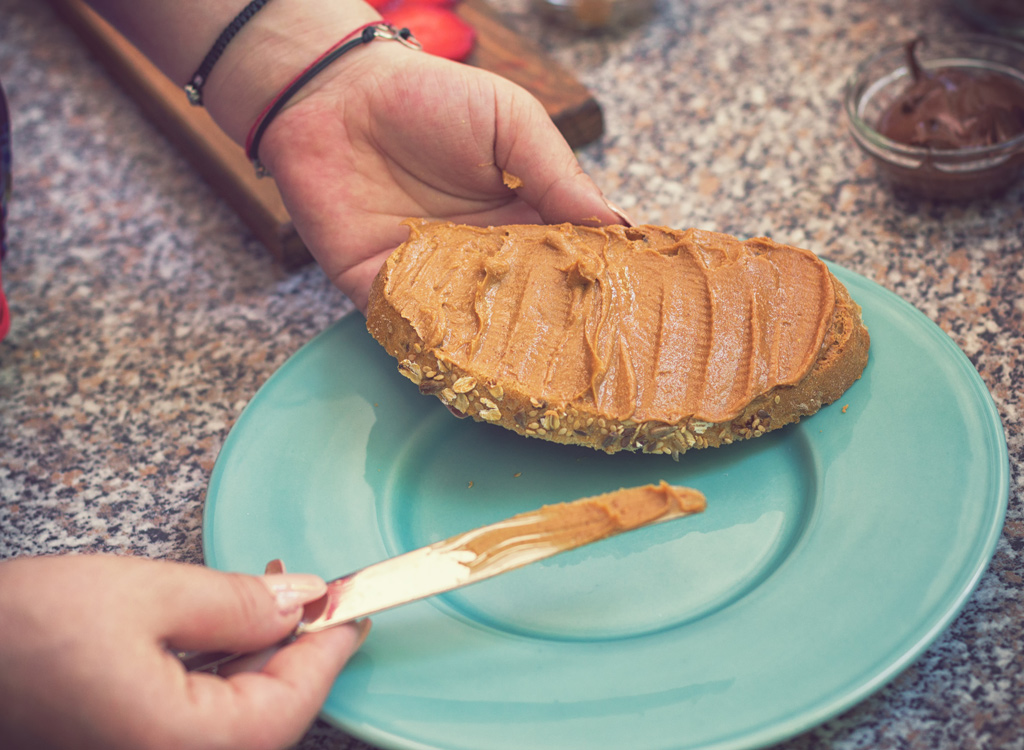
Yes, you read that right. Carbs are not a villain, folks. And eating clean doesn’t mean you have to give up this vital macronutrient. (Your body needs all three—carbs, protein and fat—to survive and thrive.) Hayim breaks it down: “Carbs just have a bad rap! Yes, most packaged high-sugar foods are carbohydrate-dense, but carbs, in their natural source, are just as important (if not more important) to your help your body function as the other macronutrients, protein and fat!” Fun Fact Time: “Your brain loves carbohydrates, and can’t even function without it. But that does not mean your brain does not love Twinkies! It means your brain loves whole grains like brown rice and quinoa, legumes, vegetables, fruits for they are not only clean sources of carbohydrates, but also carry fiber, vitamins, and minerals.”
Go Ahead, Load Up Your Plate
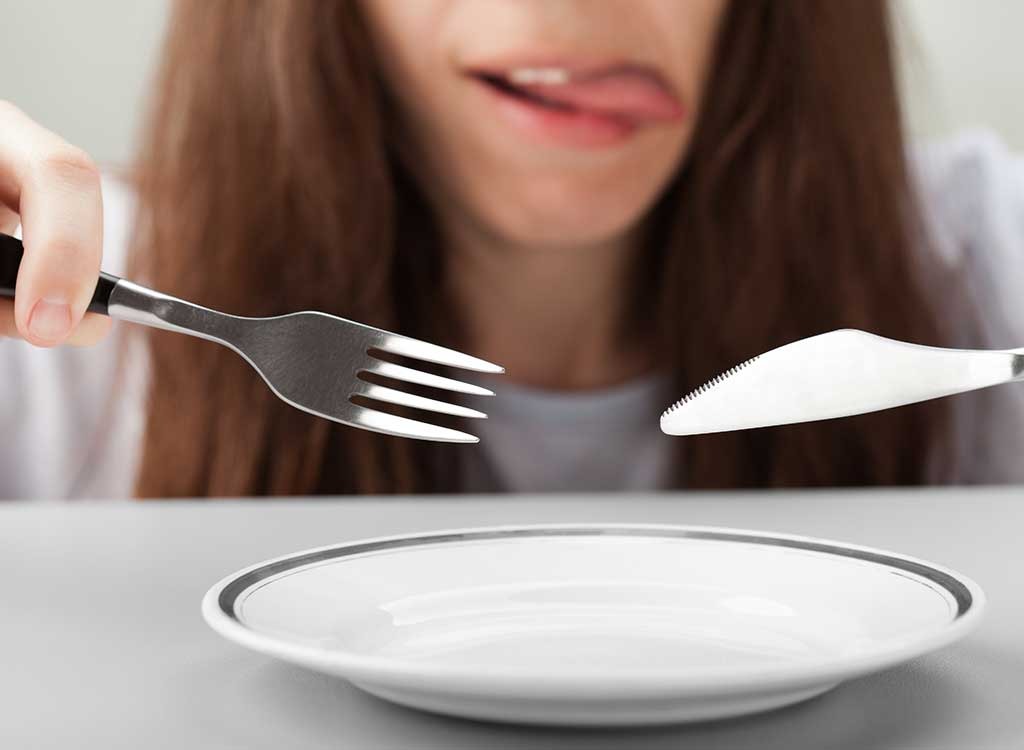
Amen to this one, right? “Contrary to most diets, eating clean allows you to eat more food, not less. The difference is you are able to eat more and still maintain/lose weight because you are making more mindful, educated and informed food choices,” says Hayim. “Eating clean isn’t some kind of fad diet that eliminates major food groups; instead, it provides you with the tools to make better decisions within those food groups. When we eat clean, there are no ‘cheat meals’ when we want a treat. You can, in fact, enjoy celebrations in moderation.”
Steer Clear of Eating Low-quality ‘Power’ Bars
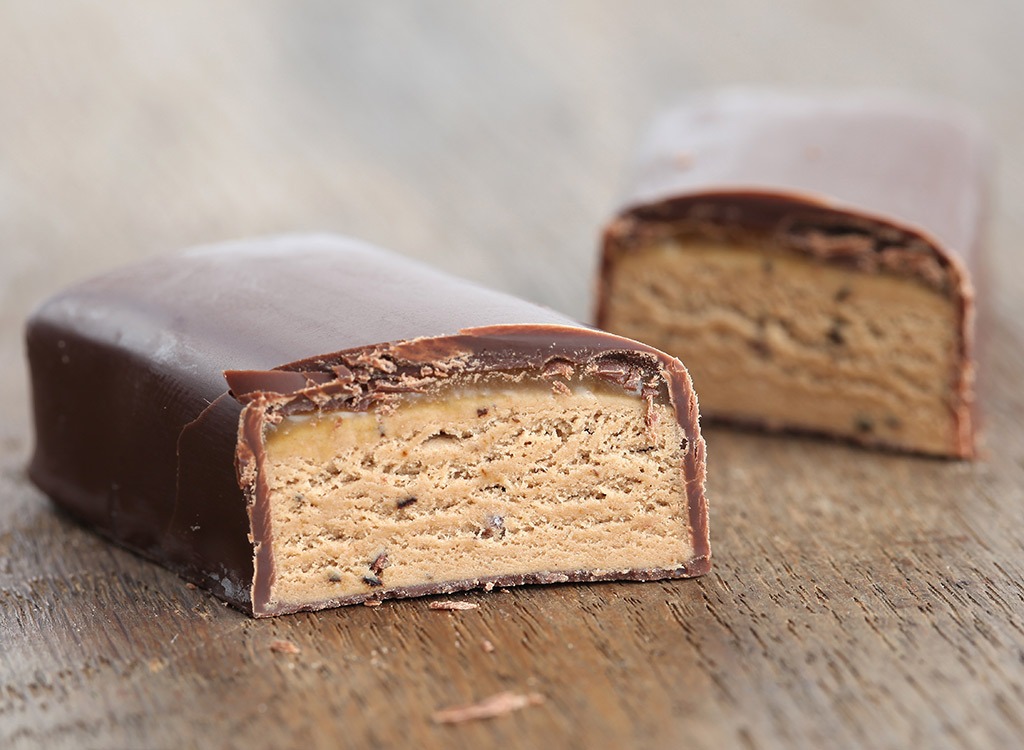
Mmmm, nothing like guzzling down some tasty whey protein and maltodextrin after a hard workout, right? So. Wrong. You may equate eating clean with those purportedly wholesome power bars, but they may be doing you more harm than good. “Most power bars are filled with sugar and poor-quality ingredients like isolated soy protein and chemical additives. Instead, choose a handful of nuts and a piece of fruit,” advises Annie Kay, MS, RDN, Lead Nutritionist at Kripalu Center for Yoga & Health.
Go Meatless at Least One Day Per Week
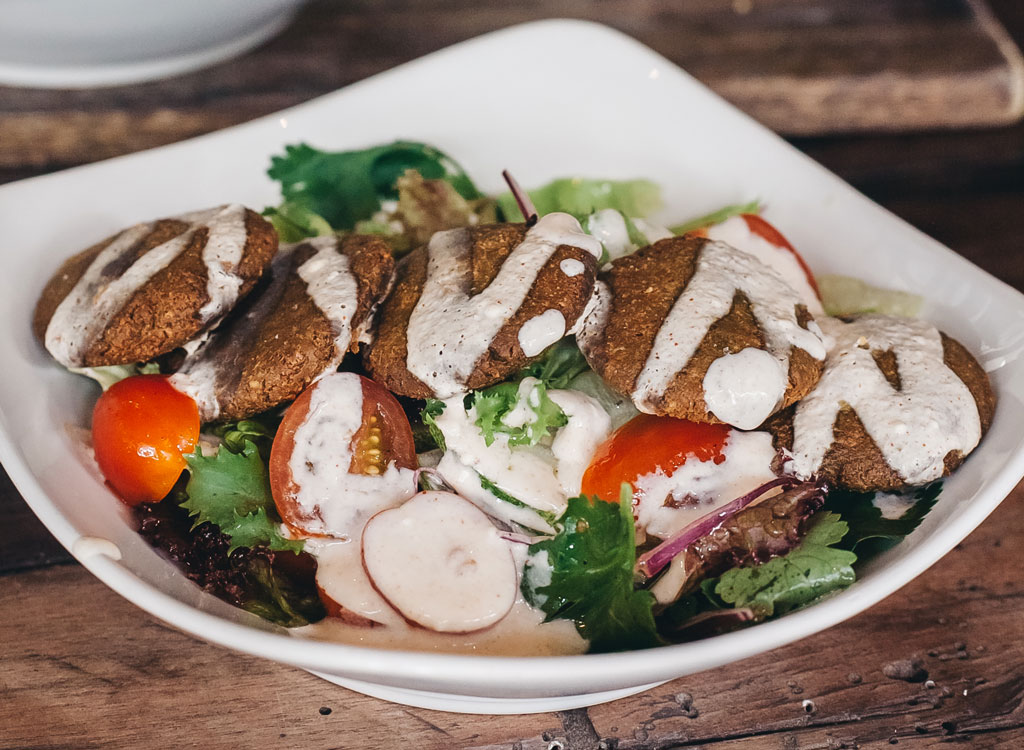
No, it doesn’t have to be Monday, but it’s still important. “To reduce your carbon footprint and eat sustainably, try going meatless one day per week. Plant-based foods are often less processed than meat and offer an abundance of nutrients. Beans, lentils, nuts, seeds (e.g. chia, hemp), tofu, and certain whole grains, like quinoa and buckwheat, offer a great source of protein,” says Alexandra Miller, RDN, LDN, Corporate Dietitian at Medifast, Inc. #MeatlessThursday? Don’t mind if we do. Check out more plant-based weight loss secrets omnivores need to know here!
Break Up with Fried Foods
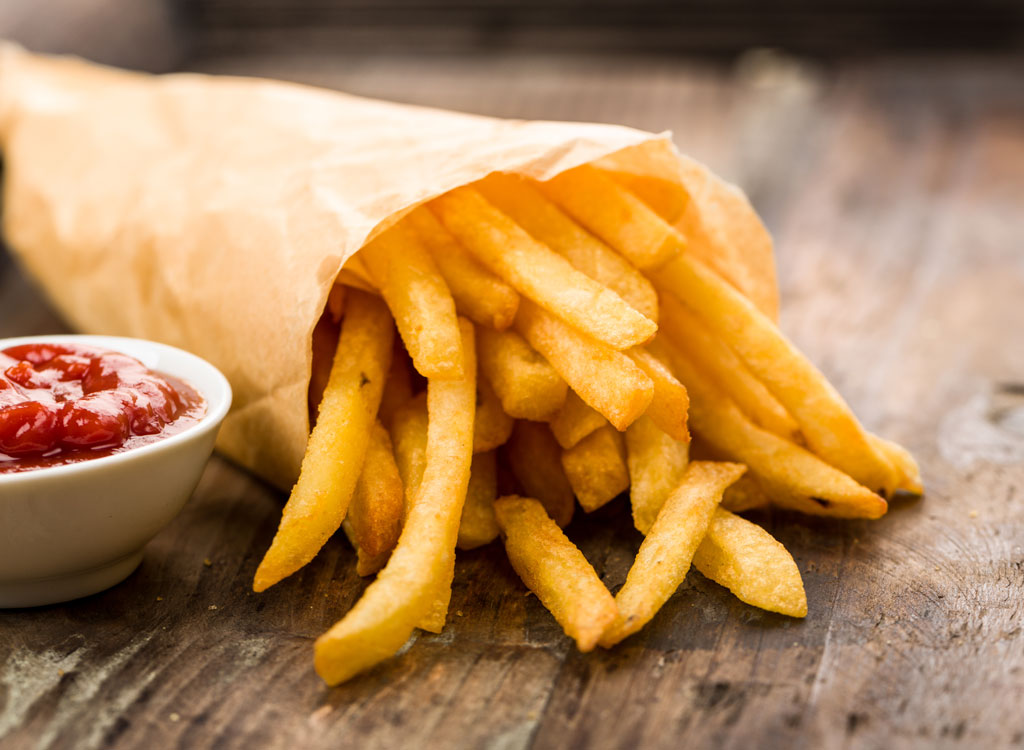
It’ll be easier than ditching that summer fling, we promise. And don’t forget to look for fried food concealing itself under sneaky names: “In addition to forgetting the fried, deep-fried and pan-fried foods, [nix anything on a menu or label that’s] crispy, au gratin, or stuffed. All of which are high in bad fats and calories, and contain zero nutritional value (even if it did before it went into the fryer!). Instead, look for steamed, broiled, baked, grilled, poached or roasted foods,” says Peggy Kotsopoulos, RHN, nutritionist, and author of Kitchen Cures.
Balance Your Plate
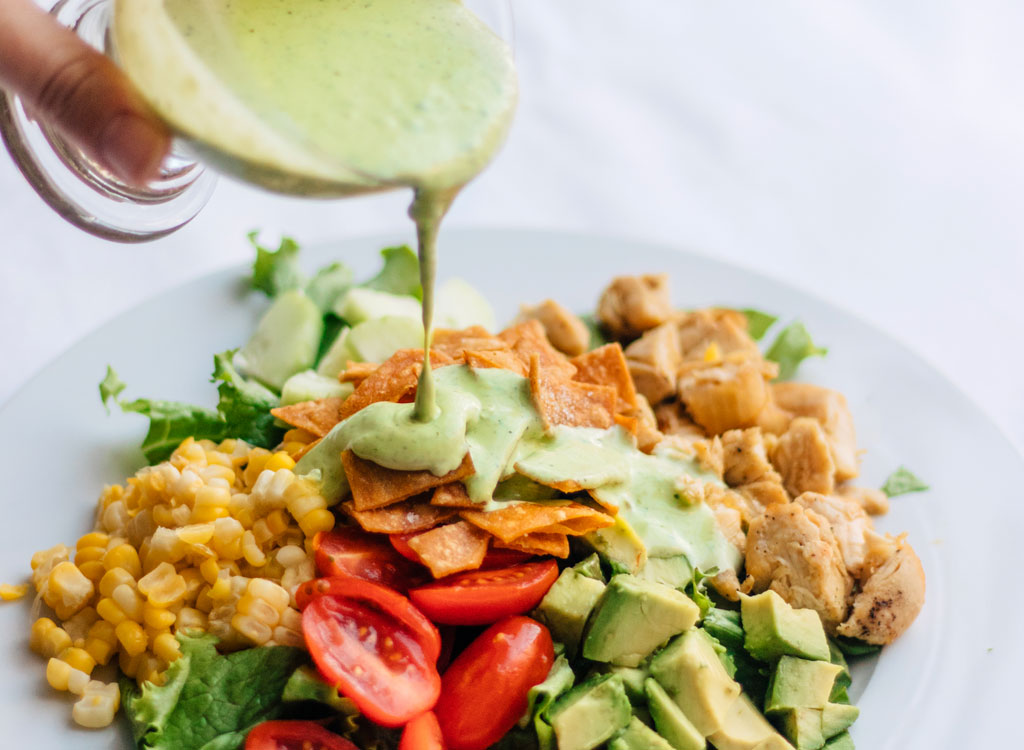
“Restrictive diets are never realistic for the long haul, so learning to balance your plate may be key to lasting clean eating,” shares Dr. Tasneem Bhatia, MD, also known as “Dr.Taz,” a weight loss expert and author of What Doctors Eat and The 21-Day Belly Fix. “Use my 3:1 rule; every plate should be 3 parts fresh- as in fresh vegetables, fruits, lean meats, healthy fats and one part frozen, canned or boxed. Change the proportion of fresh to packaged and clean eating becomes an elusive goal.”
Read Your Labels
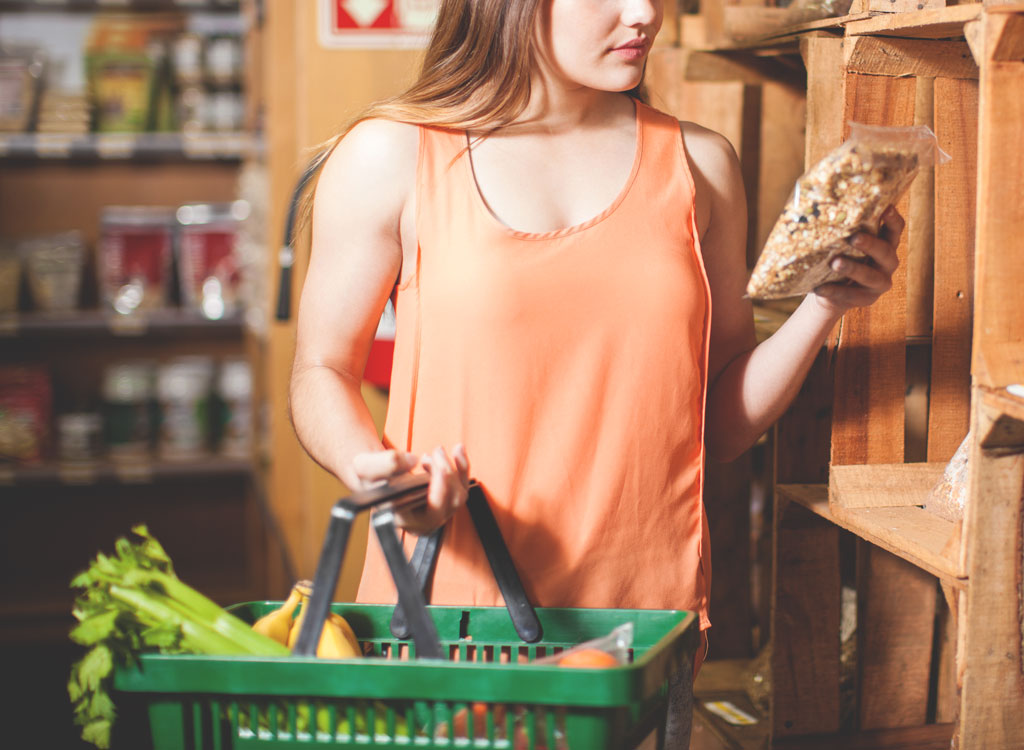
We’re talking IRL-syndrome here: Intensely Read Labels. Not high school Huck Finn-status scanning. Read the labels: “In the wise words of Tosca Reno, one of the pioneers of the Eat Clean diet, ‘if you can’t read it, don’t eat it!’ If it sounds complex, or like a word straight out of chemistry class, chances are it is added to artificially preserve the food or sweeten it. When we eat clean, we aim to eat real food sources,” says Hayim. “Marketing on packaging can be deceptive: Just go straight to the ingredient list and make your own judgments. Sometimes, we’ll even find we have to walk away from foods that are labeled as ‘healthy and gluten-free’ after learning what’s really in it.” Pro-tip: “Avoid additives like artificial sweeteners, food colorings, and the preservatives BHA/BHT, and sodium nitrate,” advises Davis.
Follow the “Six or Less Rule” When Grocery Shopping

“A good rule of thumb is shopping for groceries with six ingredients or less. This helps us steer clear of extremely processed foods that would never be obvious from the outside. For example, when you buy oatmeal, it seems obvious that there would just be oats, but unfortunately, it can be loaded with all sorts of other sweeteners and preservatives. There is no reason to buy oats that are made of anything more than ‘just oats,'” offers Hayim. “You may find that some of your favorite foods and even most highly regarded as ‘health foods’ are made up of zillions of ingredients. The good news is that there’s definitely an alternative and cleaner version of whatever you have to ‘sacrifice’ on the market.” Does that Chocolate Chip Chewy Bar still sound good with all those corn syrup solids, caramel color and soybean oil wedged in there? We didn’t think so.
Don’t Focus on What You’re Giving Up
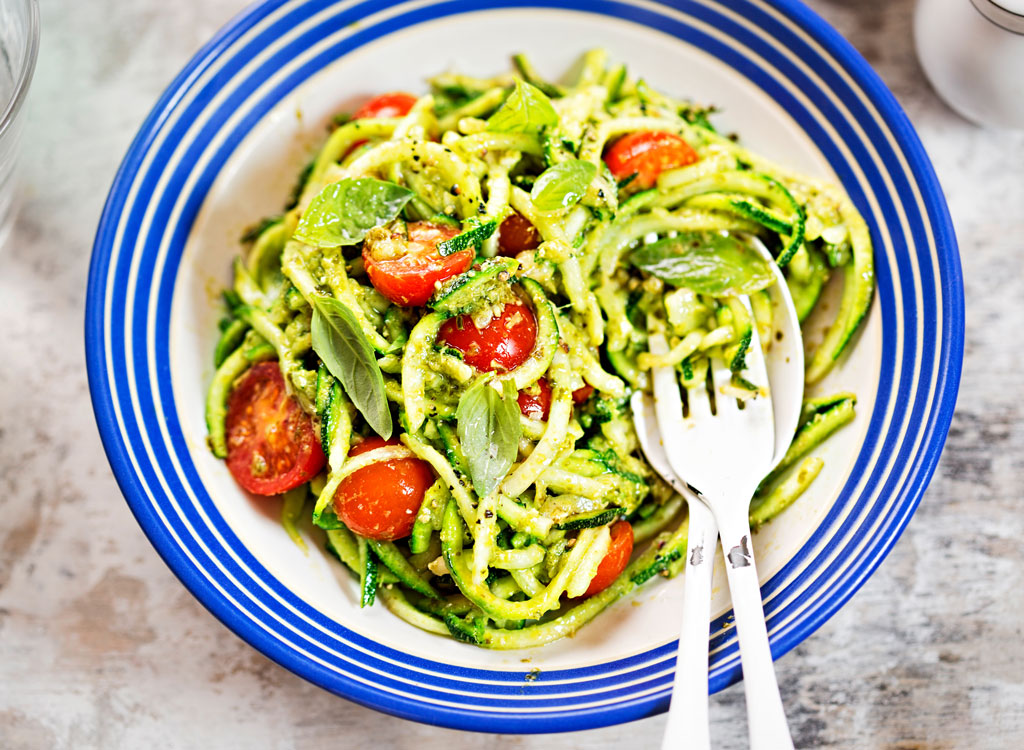
Instead, reframe it on all the delicious real food options now at your fingertips and show stealers in your healthy eating arsenal. “[Rather than thinking about what you’re missing out on, start by] adding more real, nutrient-dense whole foods to your diet and making small changes to the ingredients you use regularly. If you like pasta, replace white, refined pasta with whole grain or even try making noodles out of zucchini. Try sprouted grain bread instead of whole wheat. Try kelp noodles instead of refined noodles in an Asian stir-fry. If you’re at a fast food joint, nix the fries in your combo for a side salad,” says Kotsopoulos. Little changes add up to big differences.
Eat Protein at Every Meal
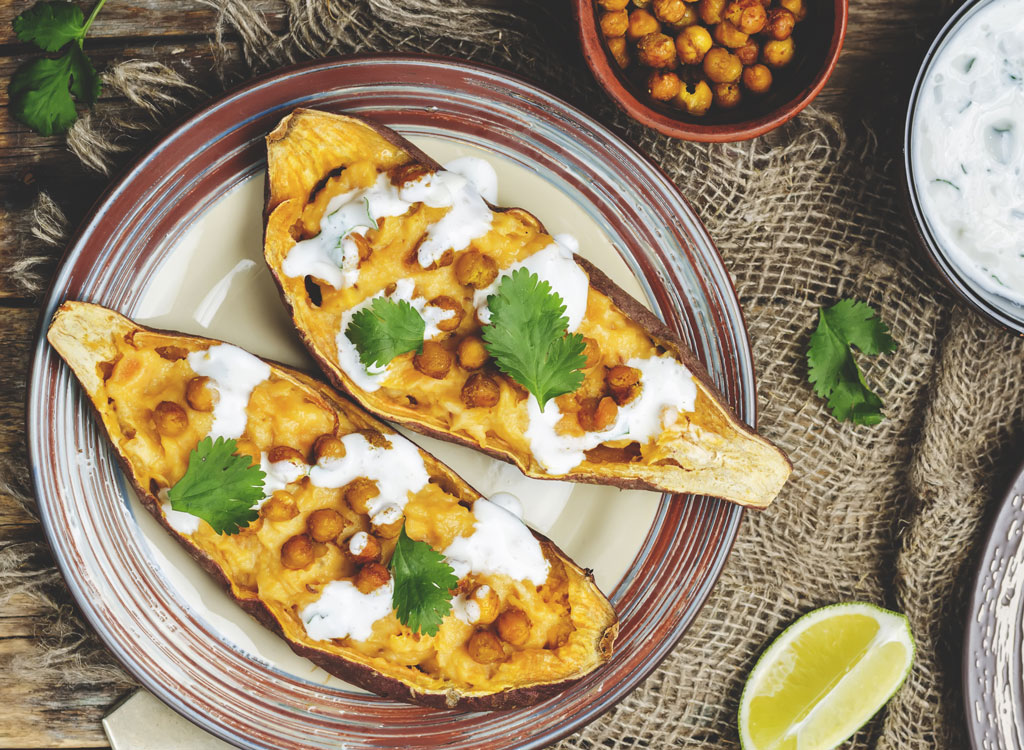
“Protein helps to build and repair muscles; it also helps keep us full and satisfied. For many, incorporating protein at dinner, and even lunch, is usually not an issue,” says Miller. “Breakfast, however, is a little more challenging. Space the protein you eat throughout the day to keep your body strong and cravings at bay. Look for unprocessed lean sources of protein, such as legumes and fresh meats free of preservatives, when possible.” For breakfast, try unsweetened greek yogurt, eggs, or almond butter spread on whole grain toast with banana and cinnamon.
Don’t Swear off Canned and Frozen Goods
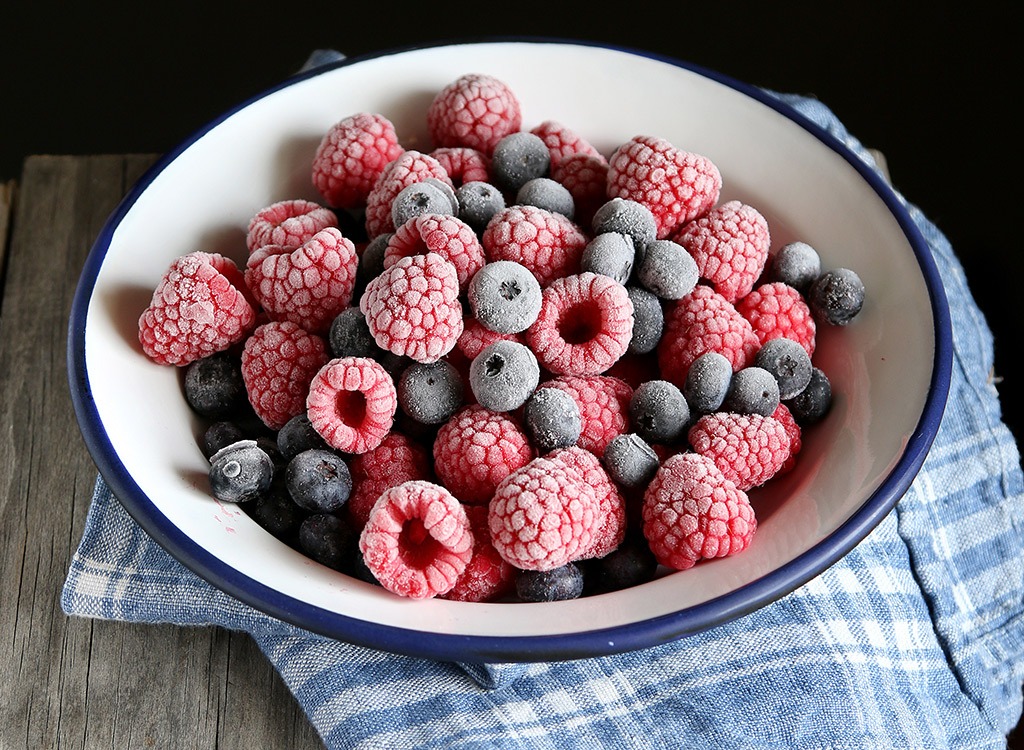
Just because it comes canned, pre-packaged or in the frozen aisle doesn’t necessarily make it off-limits. “Look for no-salt-added canned vegetables, frozen or dried fruits without added sugar, or meats without preservatives like MSG,” says Sarah-Jane Bedwell, RD, LDN, a Nashville-based nutritionist and author of Schedule Me Skinny: Plan to Lose Weight and Keep it Off in Just 30 Minutes a Week.
Break Up With Processed Cheese
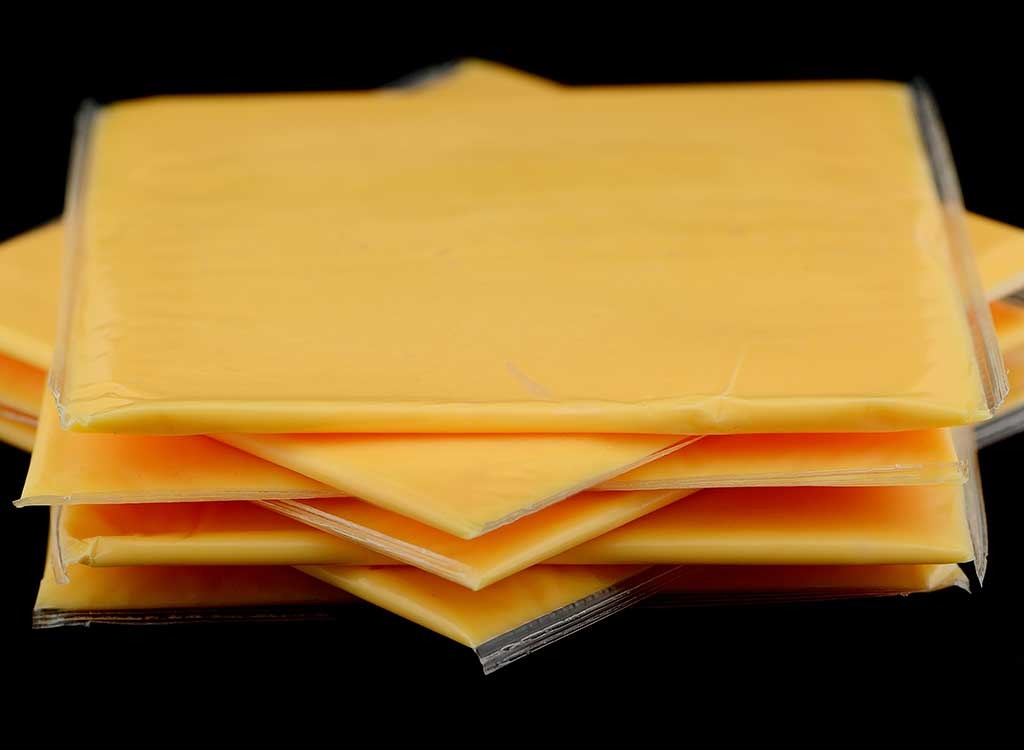
“Can I eat cheese while eating clean?”…asked every person ever. “Sure, if the cheese is pure, straight from the source, and unprocessed,” quips Hayim. “Say goodbye to American cheese and Cheez Whiz, and open your arms up to feta and goat cheese. Instead of shopping for cheeses in the dairy aisle, check out the fresh cheese section, and see what is available, keeping in mind the expiration date [See tip #5 above!]. If the cheese is going to last in your fridge for months, step away! This also doesn’t mean it’s okay to add it to every meal or coat your veggies in it, but having a small amount of these cleaner cheeses a few times a week is a great way to keep your food exciting and flavorful.”
Become a Mindful Eating Guru
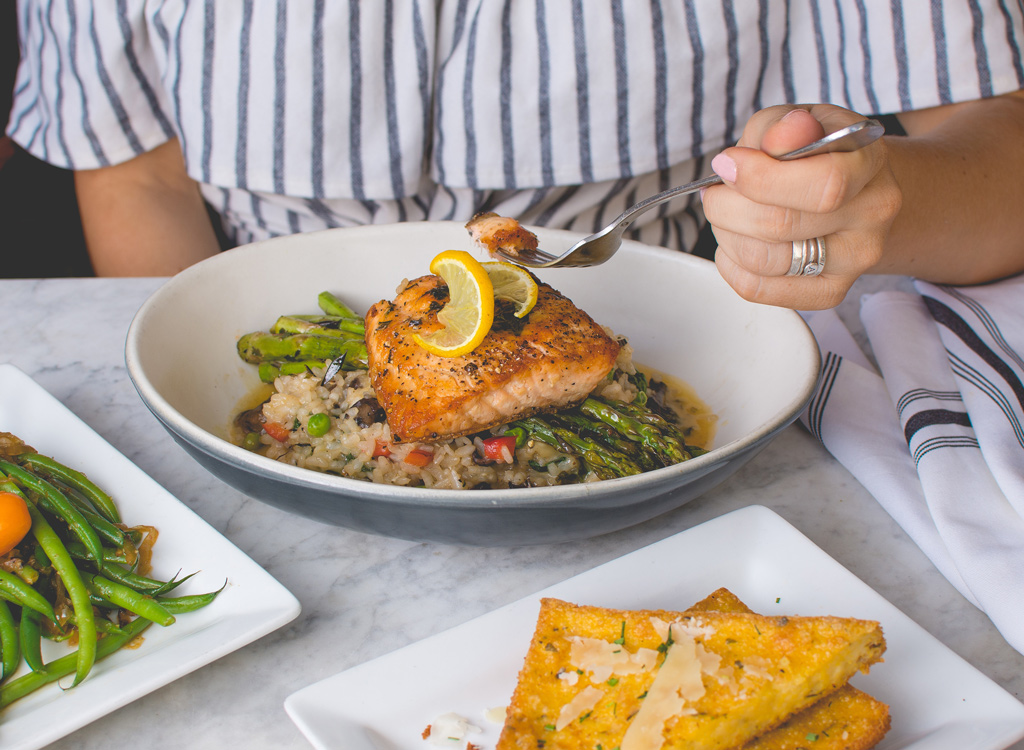
Mindlessly eating while on cruise control as you’re watching Netflix or navigating traffic is a recipe for falling off the clean eating train. When you’re mindlessly munching, you’re more likely to overindulge in the bad stuff too (think: nachos, cookies, candy). “Mindfulness is a meditation practice wherein you pay attention to what you eat with all your senses. Studies show that when we see, taste, smell and feel our food, we eat less and enjoy it more,” says Kay.
Listen to That Nagging Voice to Eat Your Greens!
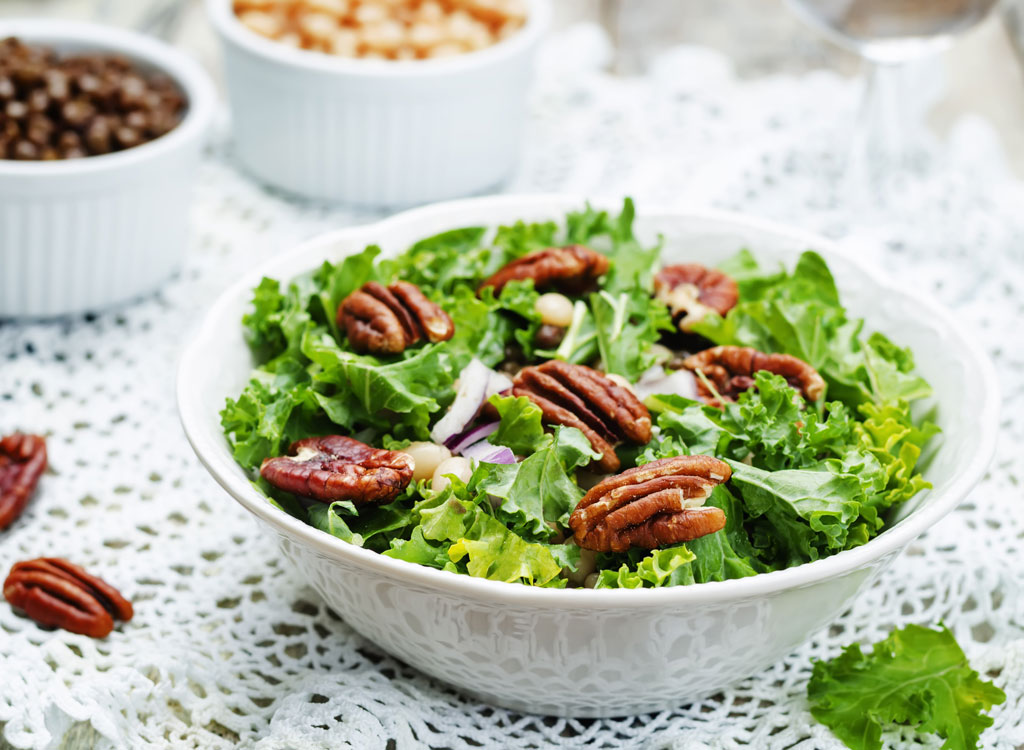
Nagging? Pfffft. More like necessary! “Greens are a fundamental part of our diet. They’re loaded with nutrients to protect and fight off disease, are low calorie, and help to alkalize our insides. However, we can forget all about them, especially when we go on limiting diets. Make sure to get in greens once a day. Whether it be in a smoothie, as the base of a salad, or as a side dish at dinner, make sure to plan out one way to get greens in per day,” offers Hayim. “Plants are the heart of any healthful diet, and somehow, somewhere, you need to eat them in order to manage your weight and stay healthy for life. The Center for Disease Control and Prevention recommends most of us eat about 9-13 servings of fruits and veggies per day,” adds Kay.
Start with One Extra Serving of Greens Per Day
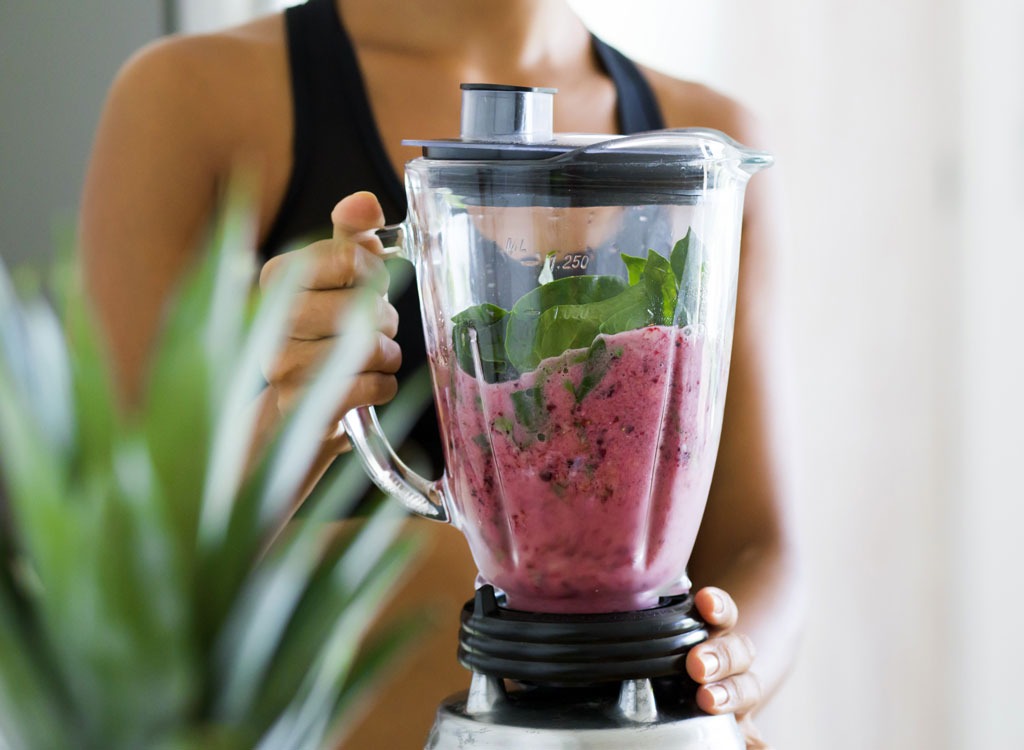
Not everyone is born a natural kale head, and that’s fine. “Adding just one extra serving of greens per day [can help] boost energy and health,” says Kotsopoulos. Dark green veggies are loaded in chlorophyll, which helps increase the number of energy-boosting, oxygen-rich and revitalizing red blood cells. Toss a handful of spinach to your pasta dishes, throw some kale in your soup, or swap out your whole grain wraps with a collard green wrap.”
Don’t Feel Bad About Eating ‘That’
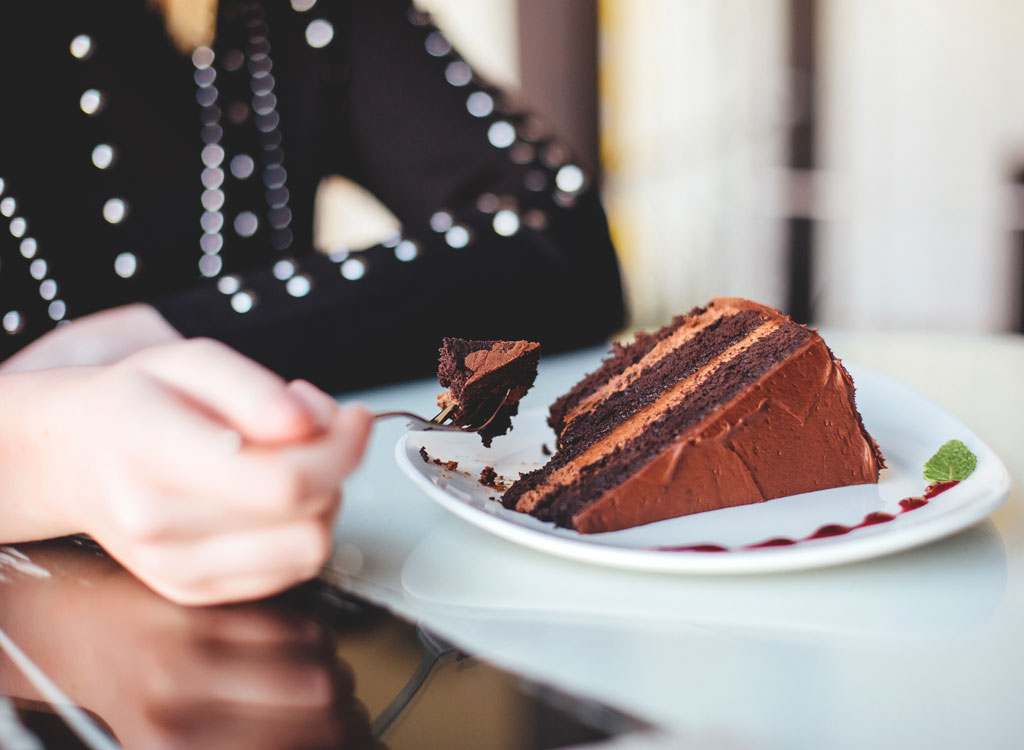
“Everyone has a treat now and then, and no one eats perfectly. Here at Kripalu, one of our central teachings is ‘practice, not perfection’, and science shows that feeling guilty about what you eat doesn’t help anyone, especially you,” comments Kay. If you slip up and overindulge, just remind yourself that you’re not going to let a tiny flub derail your entire vow to eat clean.
Drink Half Your Bodyweight in Ounces of Water

“[This will work] to clear your complexion, and boost energy. One of the number one causes of fatigue is dehydration. And the same goes for aged skin. Nothing will give you more of a youthful glow than hydrating your skin from the inside out with water. It helps to flush toxins from your body and keeps skin supple,” explains Kotsopoulos.
Say Adios to Most Other Beverages
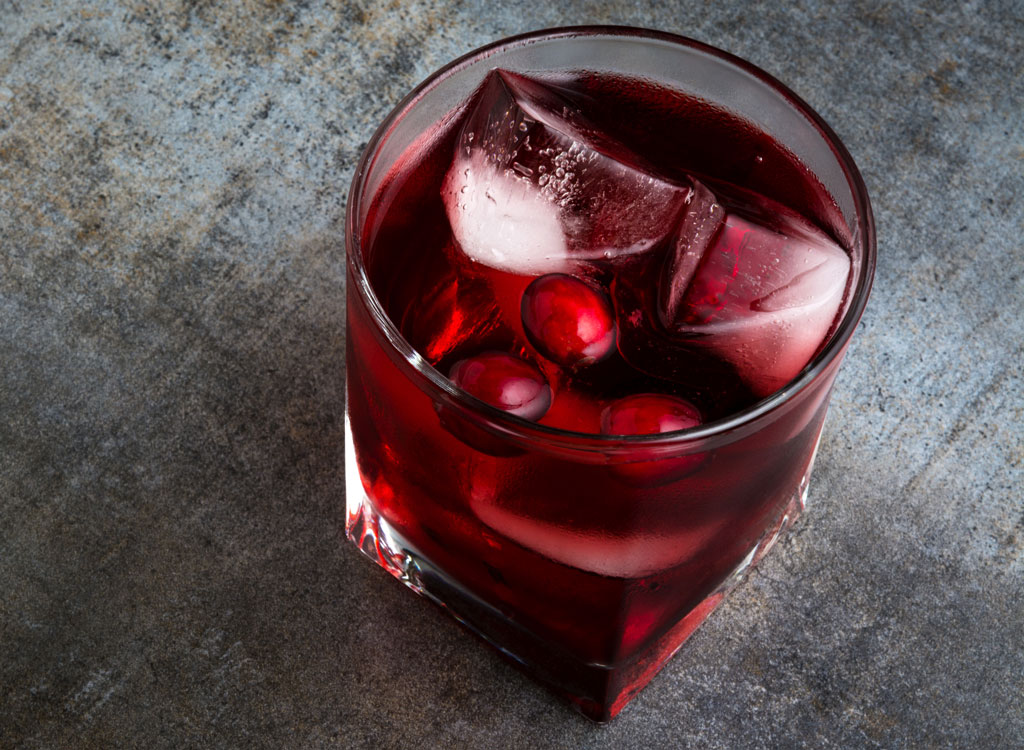
You’ve heard it before, but it’s worth swallowing up this healthy reminder: “Skip the sugary drinks, like juice and soda, and opt for water. Plain water is truly the cleanest option; nothing hydrates the body better,” says Miller. Having a hard time weaning yourself off? “For a splash of flavor, try infusing your water with fresh herbs, fruits, or vegetables. Strawberries with basil, blackberries with sage, and cucumber with mint are but a few options.” Or, try one of these fabulous detox waters that banish bloat.
Rethink Condiments and Salad Dressings
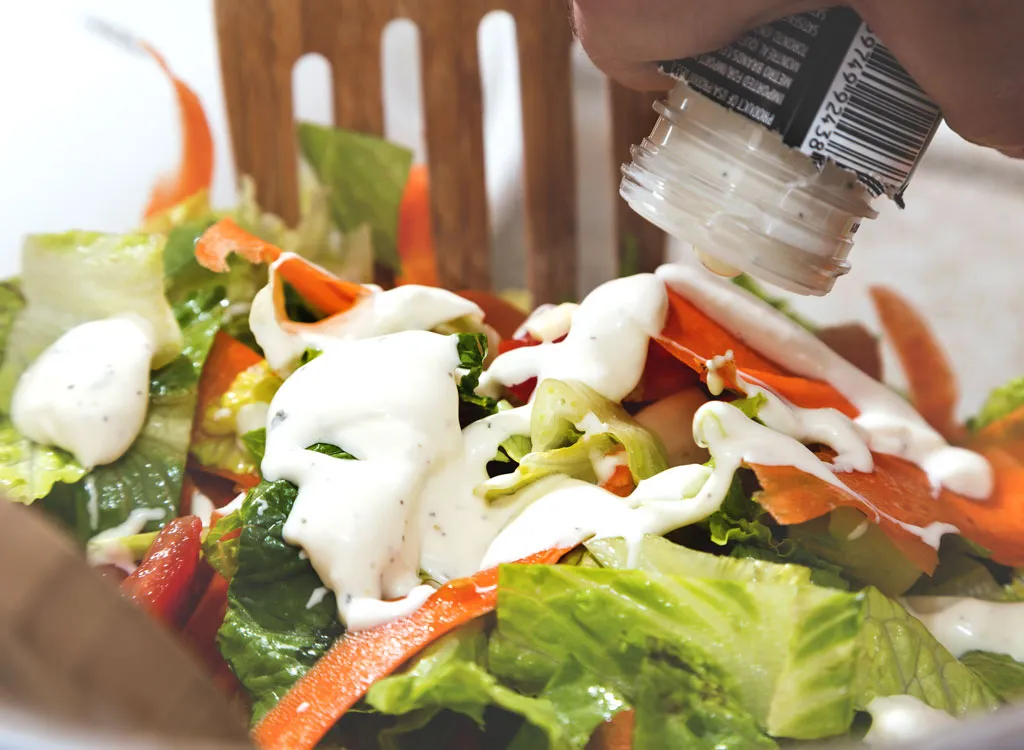
You may rely on them for a flavor-burst on the regular, but most store-bought varieties are loaded with calories, sodium and sugar. “One of my biggest wake-up calls was ketchup. I love ketchup and I’ve been eating it my whole life and never thought twice about it…until I read its label. Now I opt for Annie’s Organic ketchup, which tastes just like real tomatoes, is way less high in sodium, and makes foods less addicting to eat,” says Hayim. “Instead of having a highly-processed salad dressing, try olive oil and vinegar; [instead of mayonnaise] use mashed avocado on a sandwich,” offers Miller.
Eat Local
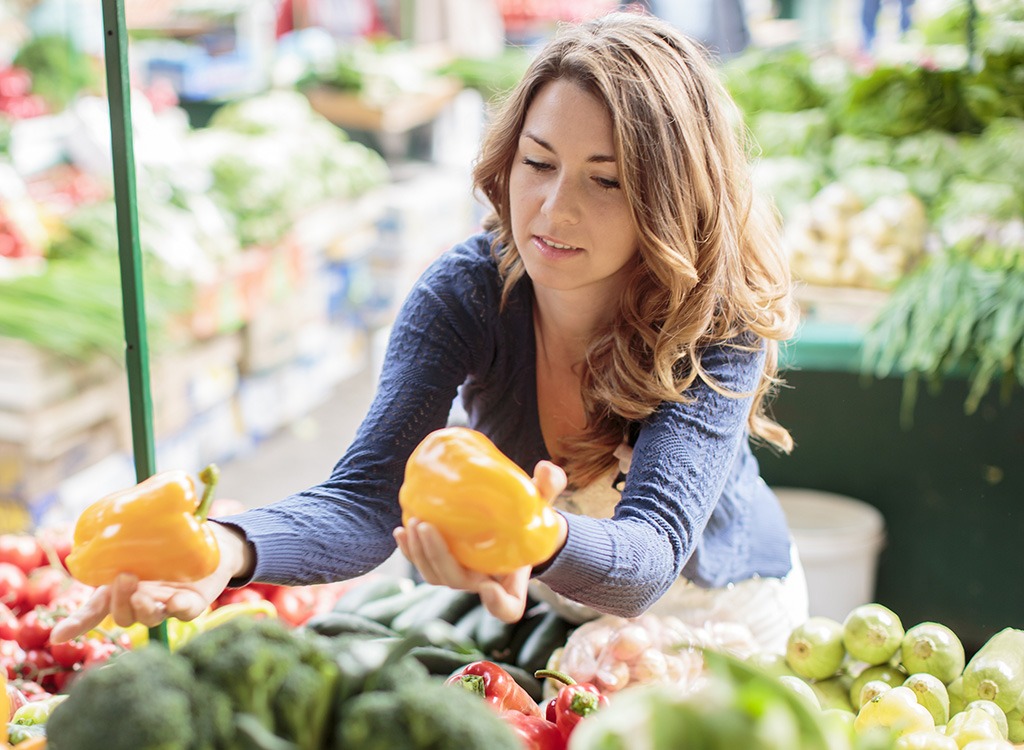
Don’t worry, we’re not asking you to become a Portlandia-level advocate of the good food movement and carry an “Eat Local, Think Global” tote everywhere where you go. But eating local can be a key to clean eating success: “Eating local and in season is the best way to pack your body with good nutrients. For example, eating a watermelon (a summer food!) in the dead of winter means one thing: Either it was genetically modified to grow, or it has had a long journey to get into your hands. Either way, it’s not as nutritious as it is in the summertime. Get to know some of the seasonal foods that naturally exist, and embrace those. Farmer’s markets are a great way to learn, and buy,” explains Hayim.
Ban ‘Diet Foods’
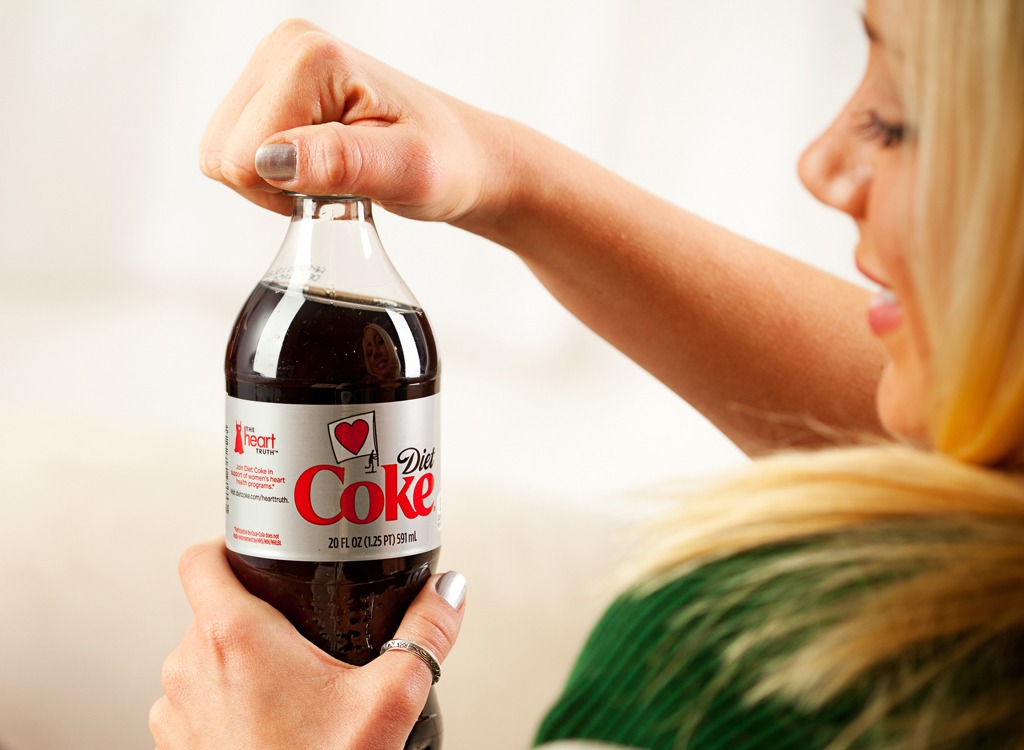
Toto, we’re not in 1979 Atkins Diet land anymore. “If it says ‘diet’ on it, walk away. Just the other day, I took a recent trip to the ice cream store with my family (yup, even dietitians have a sweet tooth). I knew nothing would be good for me walking in, but I was still up to perusing to see if anything new was on the market. To my surprise, the ice cream store had come out with a ‘lite’ version of their regular soft serve. My ears perked up, so I asked for a taste. It was delicious. As the food investigator that I am, I asked to see the nutrition info. Turns out this ‘lite’ was only ‘lighter’ in fat content, but happened to be almost the same in calories and nearly double the amount of sugar as the regular. It’s easy to get trapped by marketing labels, but I promise, no person has ever gotten healthy and happy living on diet foods,” Hayim offers.
Be a Picky Eater
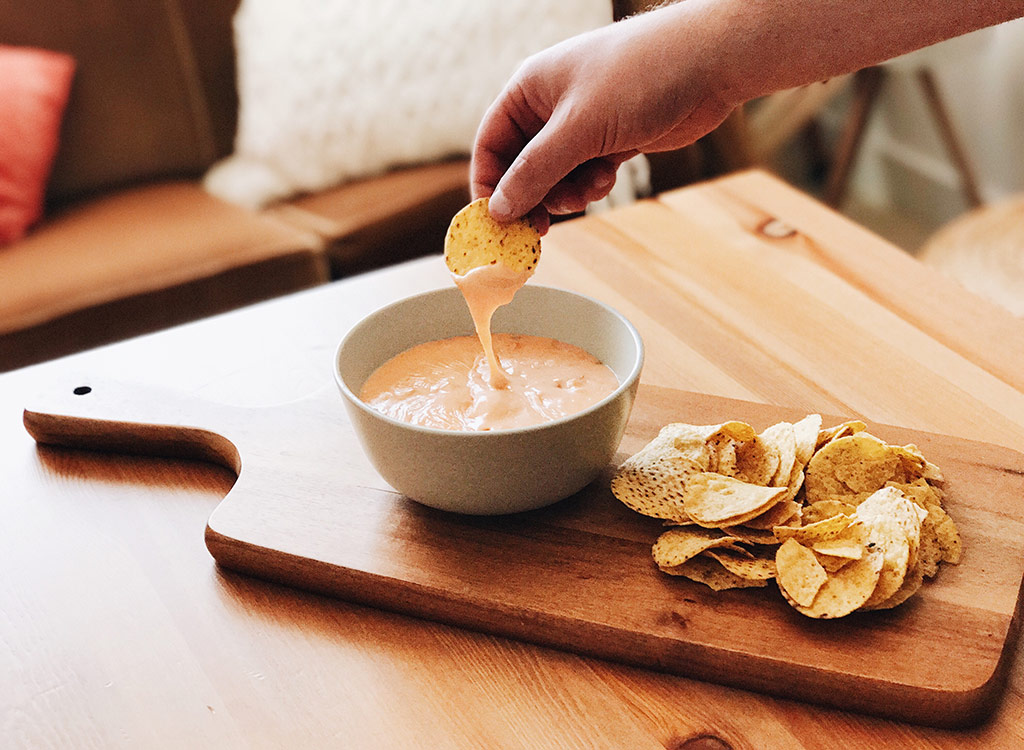
But, really. Just don’t tell your picky eatin’ sweetie we officially gave you permission. “After you fill up with your fuel, build, and boost foods, spot your must-have additions—whether that’s a creamy crab dip, buttery mashed potatoes, or bourbon pecan pie. Have a spoonful of each, but limit yourself to a few picks that are truly worth it in your book,” recommends Cassetty. Dark chocolate and peanut butter… everything, we’re calling your name.
Eat Your Meals at the Same Time Every Day
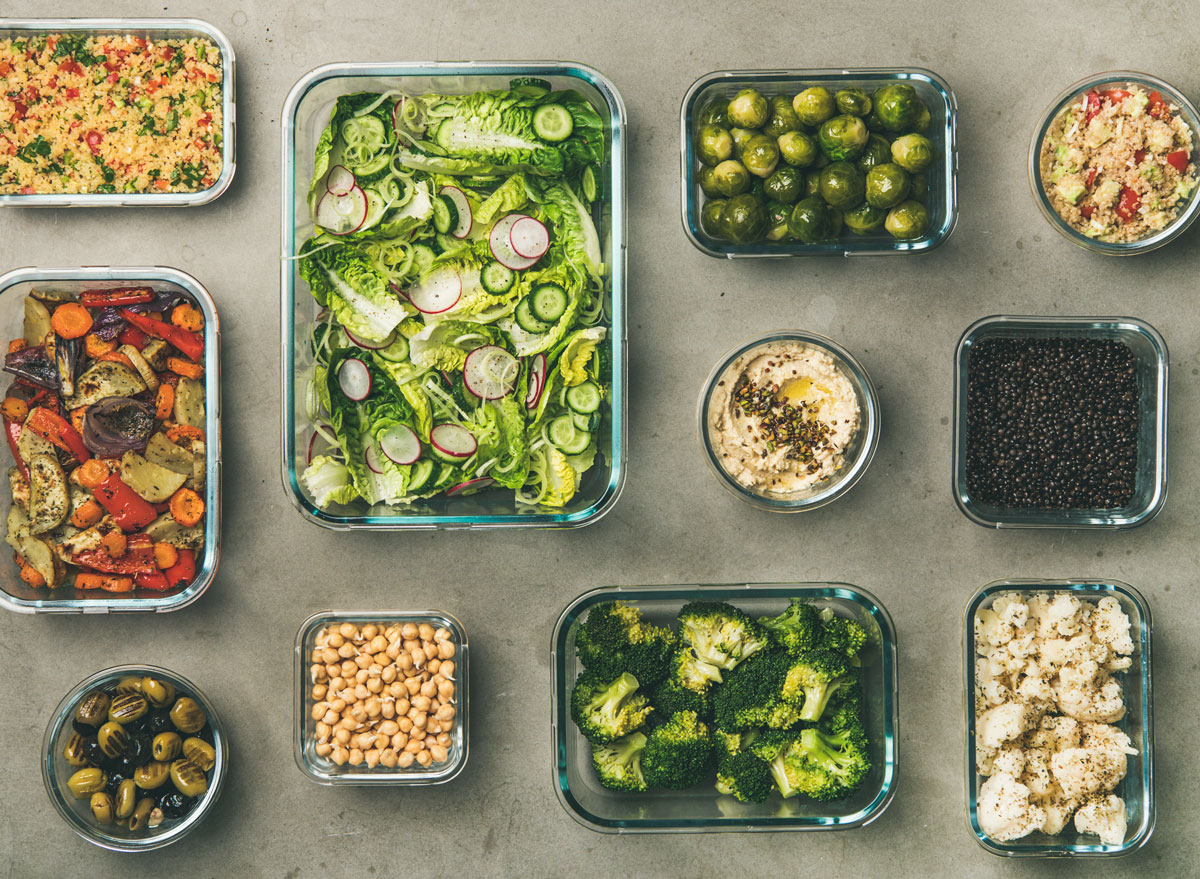
Ever notice how when work meetings or doctor appointments mess with your schedule, you wind up consuming one too many forkfuls of chili cheese fries or too many spoonfuls of ice cream come mealtime? It’s one of the 21 ways your job is making you fat! “Eating dinner – or is it breakfast– at 3 a.m. [can really throw off eating clean]. Eating balanced meals at regular times can help manage stress and keep your mood stable,” contributes Kay. Schedule wonky? Try one of these best foods to prevent overeating.
Add More Movement into Your Life

When you’re more active, you tend to make healthier eating choices. (You might think twice about that loaded burrito for lunch when you’ve got Glutes Gone Wild class at 5:30 p.m.) This, in turn, can make it so you want to exercise more. Now that’s a cycle we can get behind. “Look for excuses to move throughout the day, such as standing to take a phone call or stretching during a TV commercial. Schedule time for exercise; try either three 10 minute sessions throughout the day or one, 30 minute or longer session. Be sure to find activities that you enjoy, such as yoga, walking the dog, basketball, or dancing,” suggests Miller.
Don’t Be a Cookie Monster
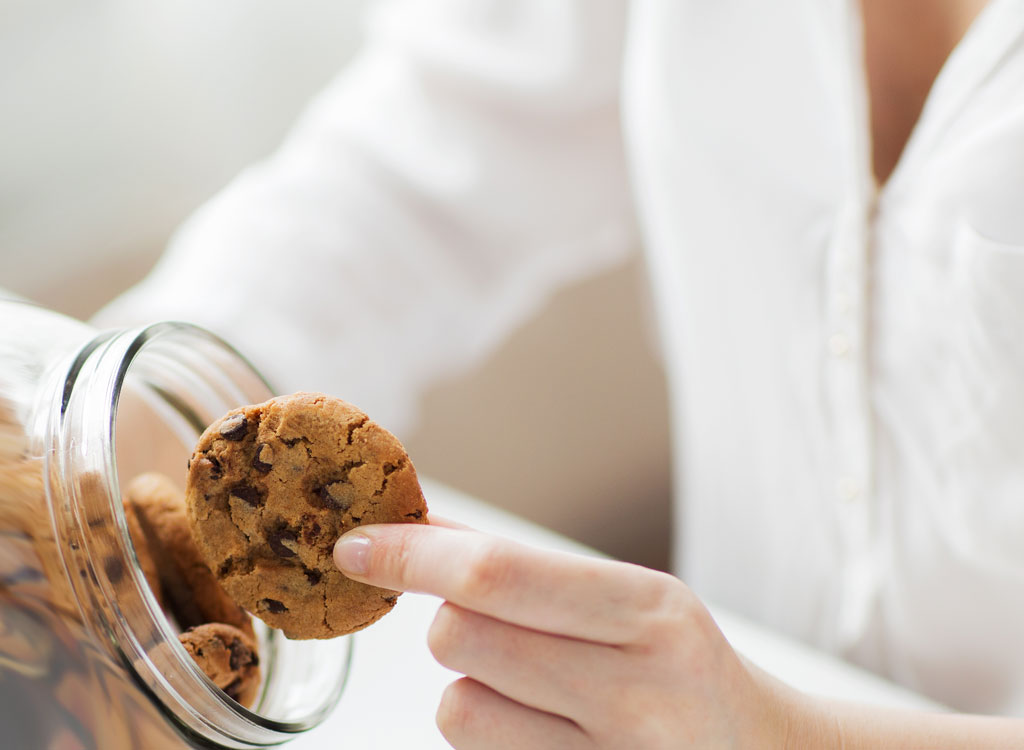
Or cake, brownie or ice cream monster for that matter. “Many Americans eat too much added sugar on a daily basis. From baked goods to tomato soup, you never know where added sugars may be hiding. The American Heart Association recommends that women and men have no more than 6 or 9 teaspoons of added sugar per day, respectively,” says Miller. “As you aim to eat clean, focus on eating less added sugars by limiting the amount of sweets and sweetened beverages you have. In addition, pay attention to the ingredient list on packaged foods. Added sugars are often lurking in unexpected places, including tomato-based products (soups, sauces, etc.), yogurts, granola bars, cereal, and peanut butter. Look for foods that do not have any type of sugar listed on the ingredient list or make sure the source of sugar is listed towards the end since that means less of it is used.”
And Follow This Sugar Rule of Thumb
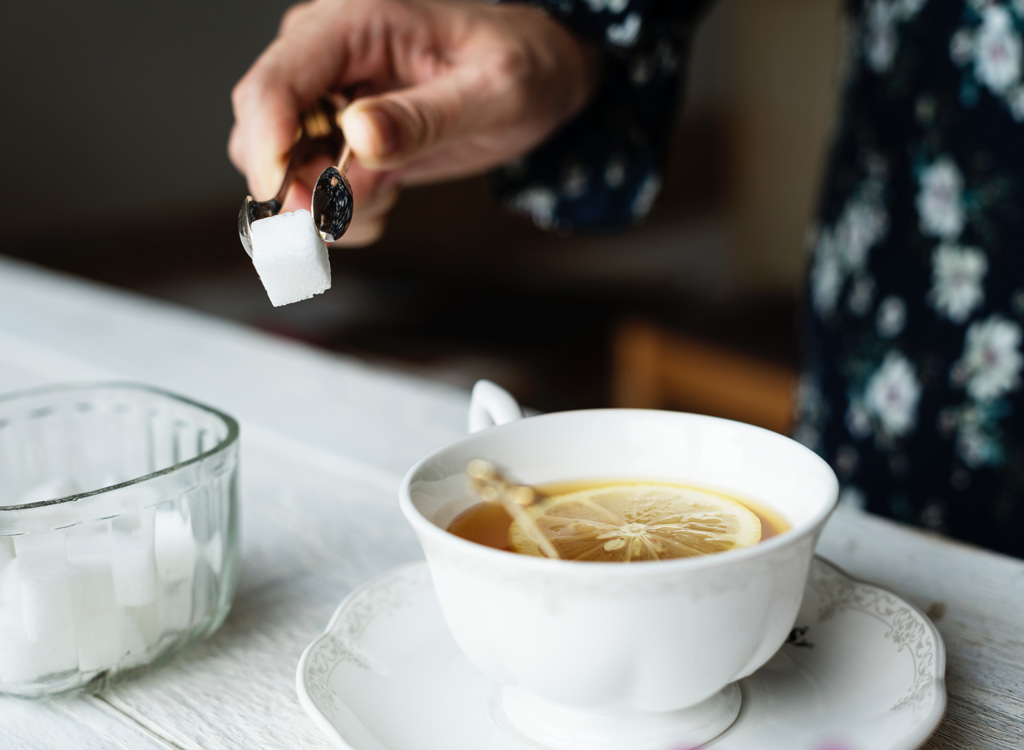
Hayim shares her go-to guideline for added sugar consumption (naturally occurring sugars, like those found in fruits and veggies, are fine!): “Anything that I eat with a label, must be 10 grams of sugar or less. This may sound generous, but once you start looking at labels, you will see this is actually difficult to find. Take Snapple Half and Half. It has 50 grams of added sugar! When you see anything more than 25 grams of sugar in its label, run.”
Don’t Hold Back on the Whole Grains
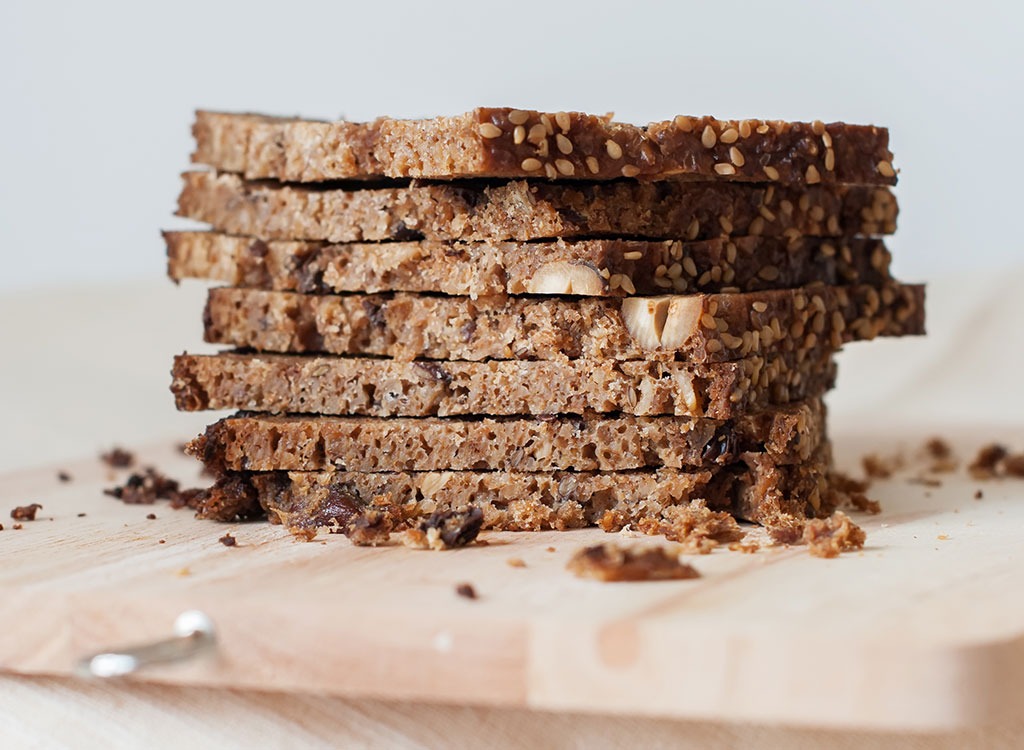
Pasta dreams can still come true even if you’re eating clean so don’t toss ’em out the door like your worn out running sneaks. Just look for whole grain varieties. Why? “Whole grains provide more nutrients, including fiber, and are less processed than refined grains. The Dietary Guidelines for Americans recommends that at least half of all grains consumed in a day be whole grains,” says Miller. “That’s because the whole grain, including the bran and germ, is used. Make sure the first ingredient on any ‘whole grain’ product is truly a whole grain (e.g. whole wheat, oats, quinoa, farro, brown rice).”
Don’t Bookend Your Sammies Between Wonder
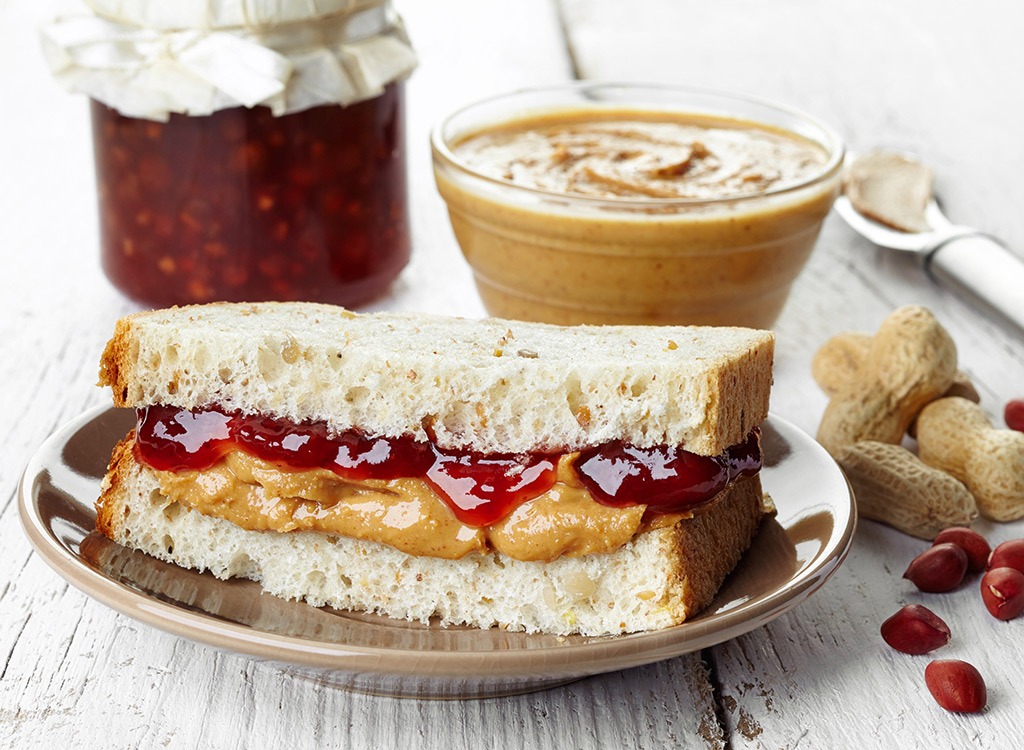
Bread, that is. “One of the most common questions I get as a dietitian is ‘Can I eat bread while eating clean?’ Well, sure if the bread is actually bread. That sounds silly, right? Sadly, though, most bread that we traditionally see, is so processed and bleached of nutrients, it’s not even bread!” exclaims Hayim. “It’s hard to find bread that is bread, but there are some solutions that allow you to keep it in your diet. Some good options are making your own, purchasing sprouted grain bread (like Ezekiel), or even purchasing bread from the bakery section, instead of the shelf. Remember, just because we have chosen a more real form of bread, does not give you the green light to consume until you can’t breathe. Eat in moderation, and reap the benefits from its nutrition, and ability to fill you up,” she adds.
Eat More Veggies
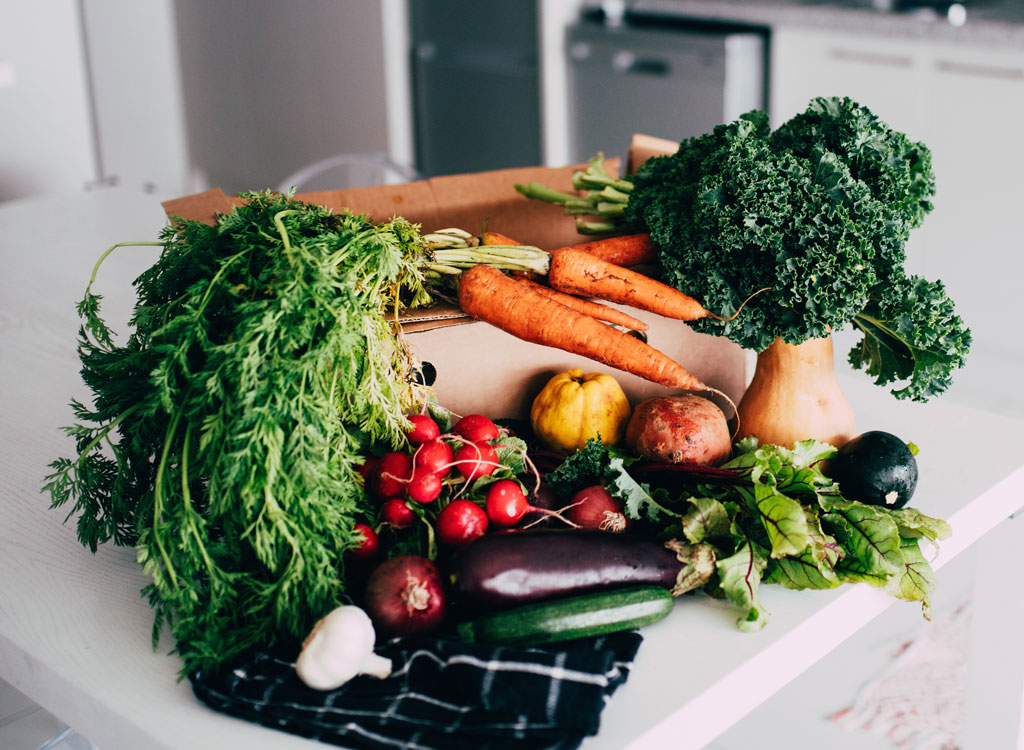
Beyond just greens, strive to include more veggies into your diet. “Vegetables are a rich source of vitamins and minerals that are essential to heart and immune health as well as healthy skin, bones, and vision. Vegetables are also rich in fiber, a nutrient that supports a healthy digestive tract and keeps us feeling full and satisfied throughout the day,” says Miller. “Fresh vegetables are a great option; think eggplant, bell peppers, carrots, radishes, spinach, cucumbers, tomatoes, and mushrooms—the options are endless. If choosing canned or frozen, stick with vegetables free of added ingredients, especially salt, by looking at the ingredient list. Aim to have a vegetable with every meal. Better yet, try to fill half your plate with veggies. They add volume and nutrition to your meal without a lot of calories.” In fact, this half-plate rule is one of the 50 genius tips to lose 10 pounds!
Eat ‘Living’ Foods

Don’t worry, you’re kale shake ain’t jumping out of your cup anytime soon. “Eating living foods just means eating foods that are close to where they came from. For example, you could choose fresh tomatoes, or you could choose Ragu for your pasta. The tomato, however, has just been picked from the ground, and has done a lot less traveling (both miles and time in transit) to get to your hand, and, therefore, has a higher nutritional content,” explains Hayim.
Be a Strategic Eater
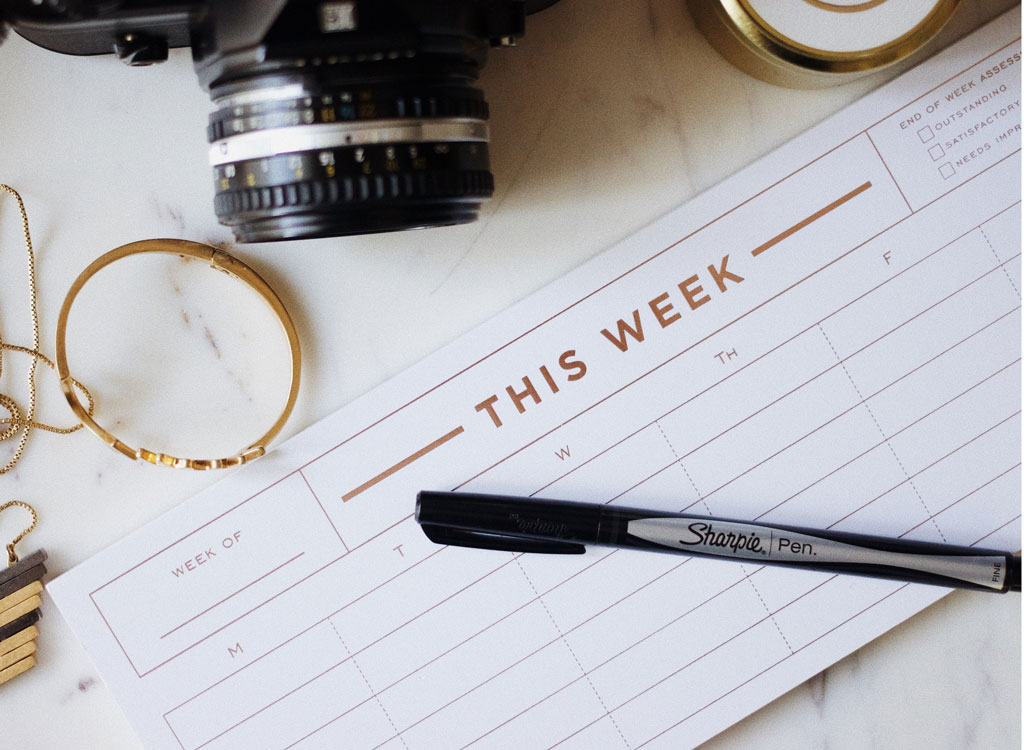
“Repeat after me: Fuel, build, boost,” says Cassetty. “Think of your fruits and veggies as your fuel. Build from there with lean proteins, like shrimp and turkey, and boost out your plate with whole grains (think brown or wild rice and quinoa).” Next time you ask “What’s for dinner? ” try and remind yourself of this mantra as you strategize your kitchen MO.
Eat What Makes You Feel Good
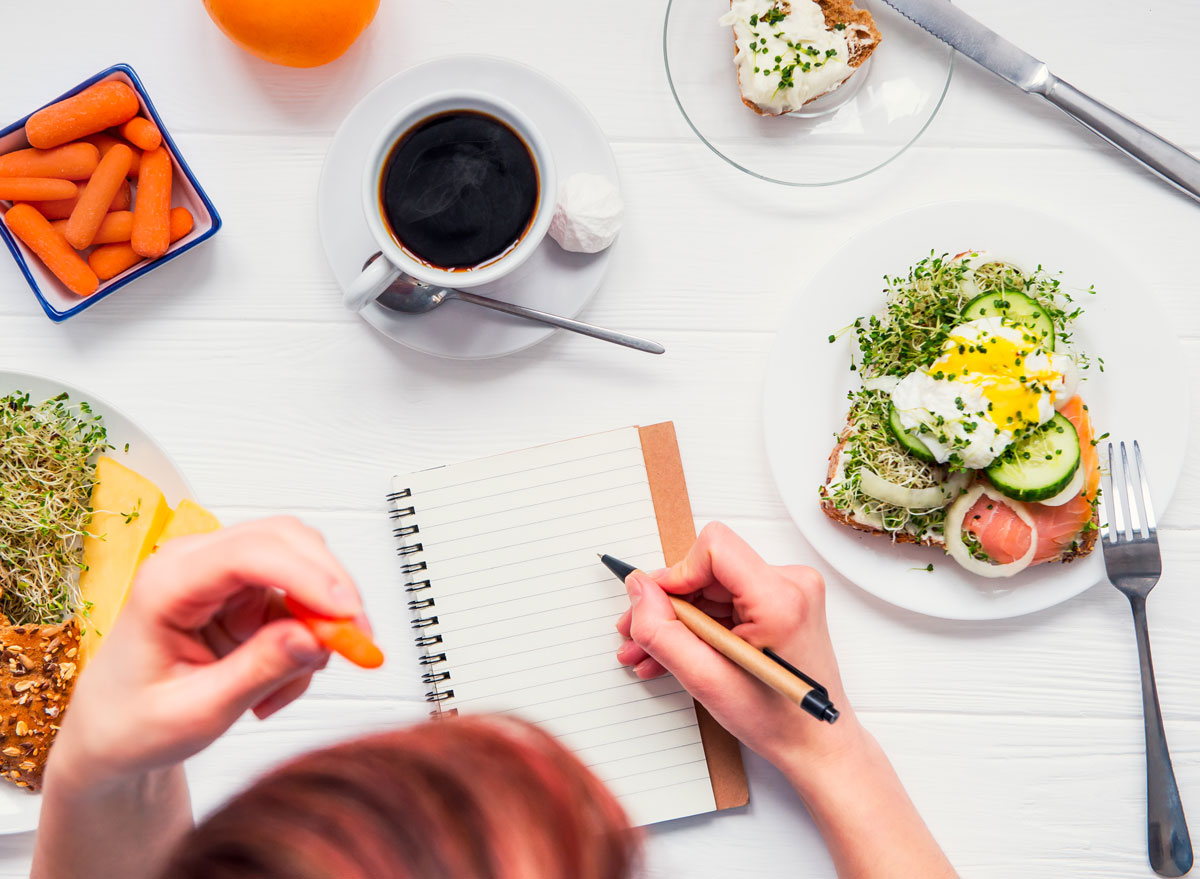
Giddy up for good health! Time to open up a new google doc or create a note on your phone, folks. “Keep a food journal for a few days without changing your eating habits, and then start trying to eat clean and keep a journal doing that for a few days. Instead of focusing on calorie count on these days, simply write down what you ate and any notes about how you feel each day,” says Bedwell. “You may notice a big difference in things like energy level and mood when you start eating clean.”
Don’t Mash Your Potatoes
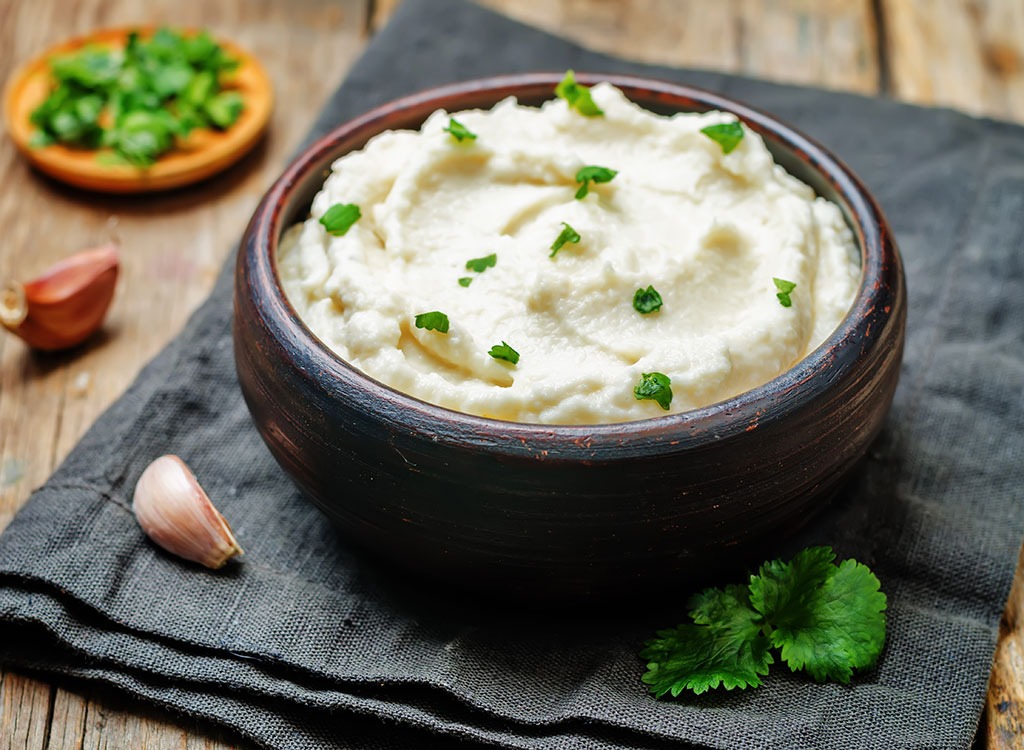
This starchy veggie is often blended with cream, salt, and butter and not much of a healthy dinner companion. Instead, try a cauliflower mash. “If nearly 300 calories of high glycemic carbs aren’t your idea of a to-die-for side dish, consider making cauliflower mashed potatoes instead. The per-cup savings: About 135 calories and 4.5 grams of saturated fat. You’ll also get more fiber in the mashed cauliflower. More good news: It’s suitable for people avoiding gluten and dairy, and is also great for Paleo dieters,” comments Cassetty.
Shop the Perimeter
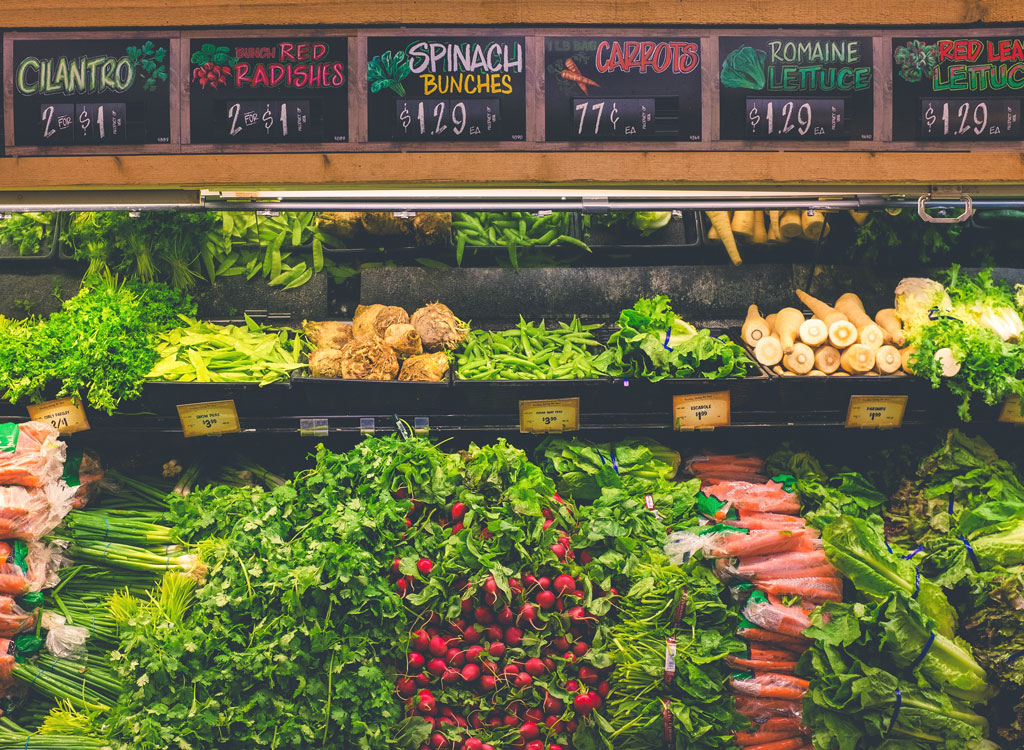
“The outside of the grocery market is usually filled with the most real foods, like fresh dairy, fresh meat, fruits, and veggies,” says Hayim. The interior aisles? Beware of many dieting landmines! “The inside is usually designed to be the shelf area, where foods (if we can even call them that) can sit for months and even years. Of course, some of our essentials are found on the inside, but aim to get most of your groceries from the perimeter.”
Shop the Rainbow, Too
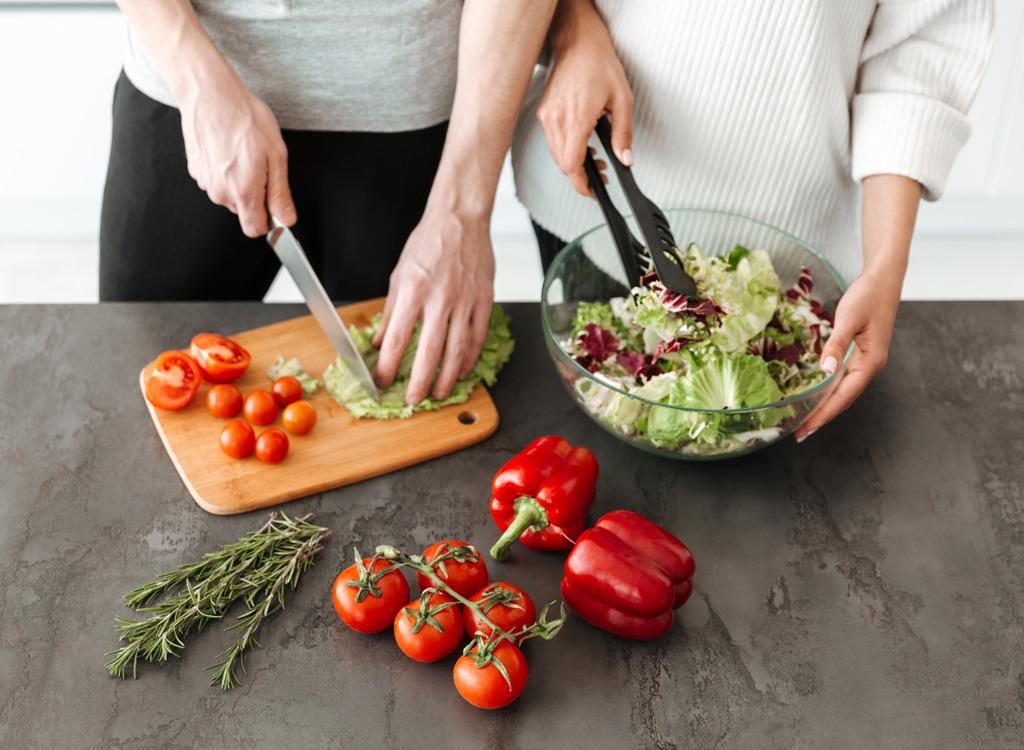
“‘Clean’ foods pack the highest nutrient value for the lowest number of calories,” comments Davis. “Brightly-colored fruits and vegetables supply more nutrients compared to the number of calories they supply. Less nutrient-dense foods provide empty calories and tend to look lighter or whiter, contain refined sugar, or high amounts of unhealthy fats.” Want more shopping tips? See the 46 best supermarket tips ever.
Cut Back on Your Salt Intake
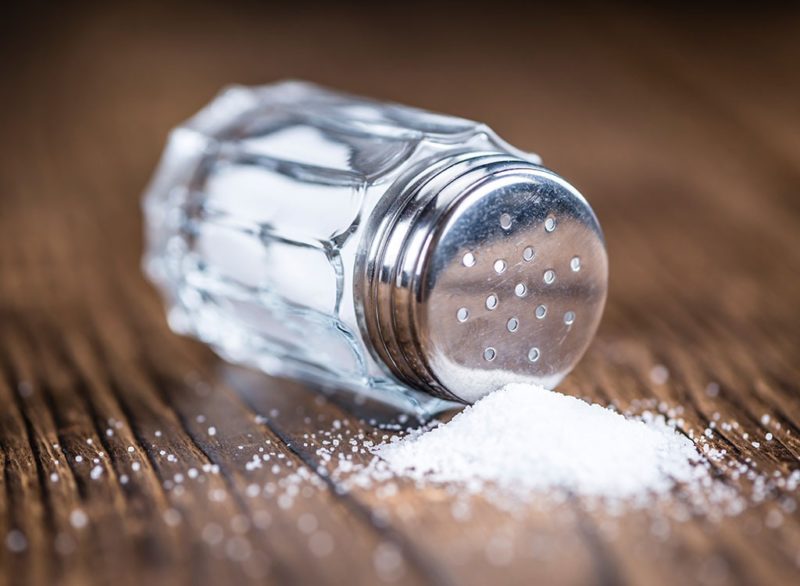
Real talk, guys: excess sodium in your diet can contribute to belly bloat, weight gain, high blood pressure, and even age you up to 20 years! “Choose foods with less sodium and prepare foods with little to no salt. The American Heart Association recommends having no more than 2,400 milligrams of sodium per day,” says Miller. “They also state that reducing daily intake to 1,500 mg is desirable because it can lower blood pressure even further. Processed foods are often high in sodium, whereas whole, fresh foods typically are not. Look at your ingredient list to monitor the amount of sodium you consume. Instead of cooking with salt, use herbs and spices to add flavor.”
Remember, Real Food Goes Bad. And That’s Okay!

The same may not apply to your Tinder date lying about height, but when it comes to shelf life, the shorter the better: “If a shelf life is a few months or longer, put it down: There are a few exceptions to this rule (such as grains or oats), but it’s safe to say that foods with very long shelf life will not provide you with the best nutrition. Most perishable foods come with an expiration date, and go bad soon after purchase…Eating clean may seem a bit more costly at first, but will certainly be cheaper than any bill from a doctor or hospital stay in the long run,” shares Hayim.
Embrace Hipster Eateries
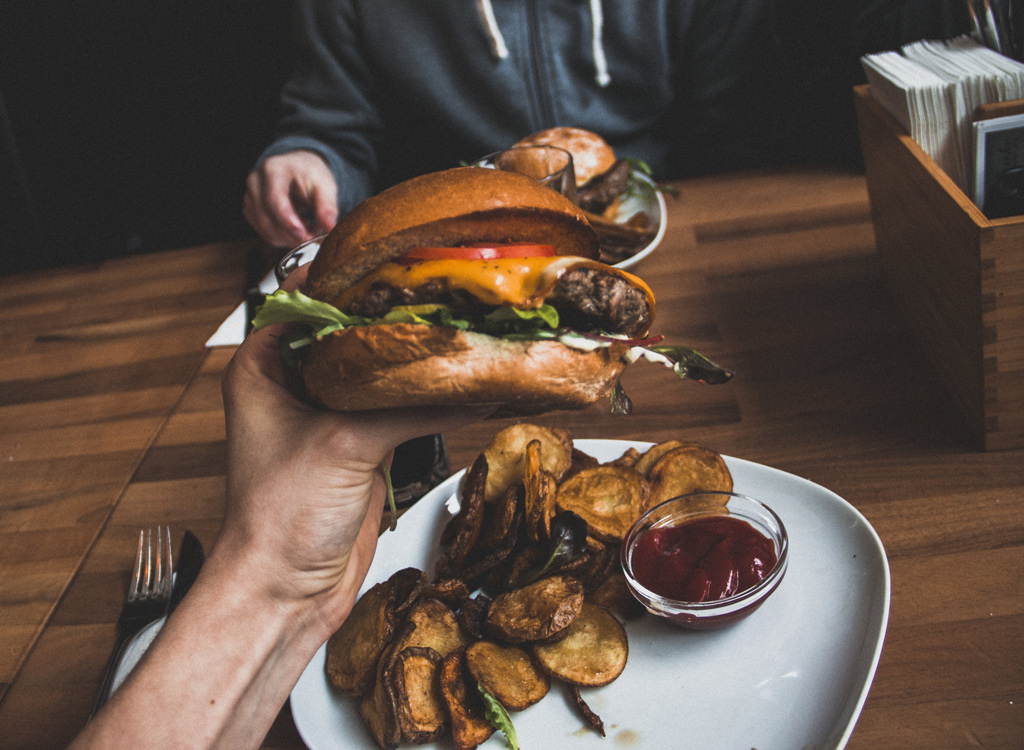
Don’t worry, you can still skip the flannel and Converses. “A handful of hipster fast-food chains catering to clean eating types are starting to pop up across the country,” says Davis. They feature fresh (and often local) ingredients and what you see is what you get, so you don’t have to worry about icky additives hiding behind closed doors. In fact, you’ll probably be met with basil plants dangling at the doors. “East Coasters can find clean offerings at Sweetgreen and West Coasters can find real foods at Veggie Grill.”
And Slash the Boozing

We’re not saying ditch the vino completely, but try to limit your consumption. “Another important principle of clean eating is keeping unwanted additives, pesticides, and other chemicals out of your body,” says Davis. “So drinking alcohol, a liver toxin, is not really consistent with a clean eating plan. Drink lots of water to flush your system of toxins and keep you well-hydrated. While we have you, find out the 14 amazing things that happen to your body when you stop drinking!
Wave Out the White Stuff
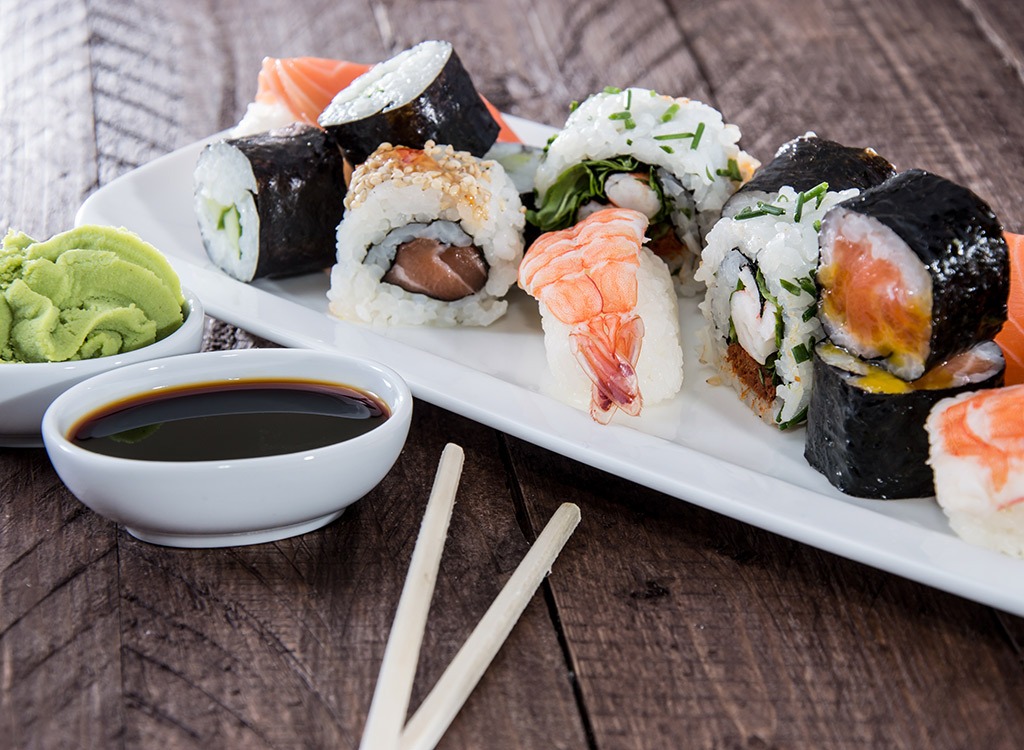
Eating out? “Ask to replace white rice or potatoes with whole grains, such as a brown rice option if they have it, or with steamed veggies or a salad,” advises Kotsopoulos.
Stick with Healthy Fats
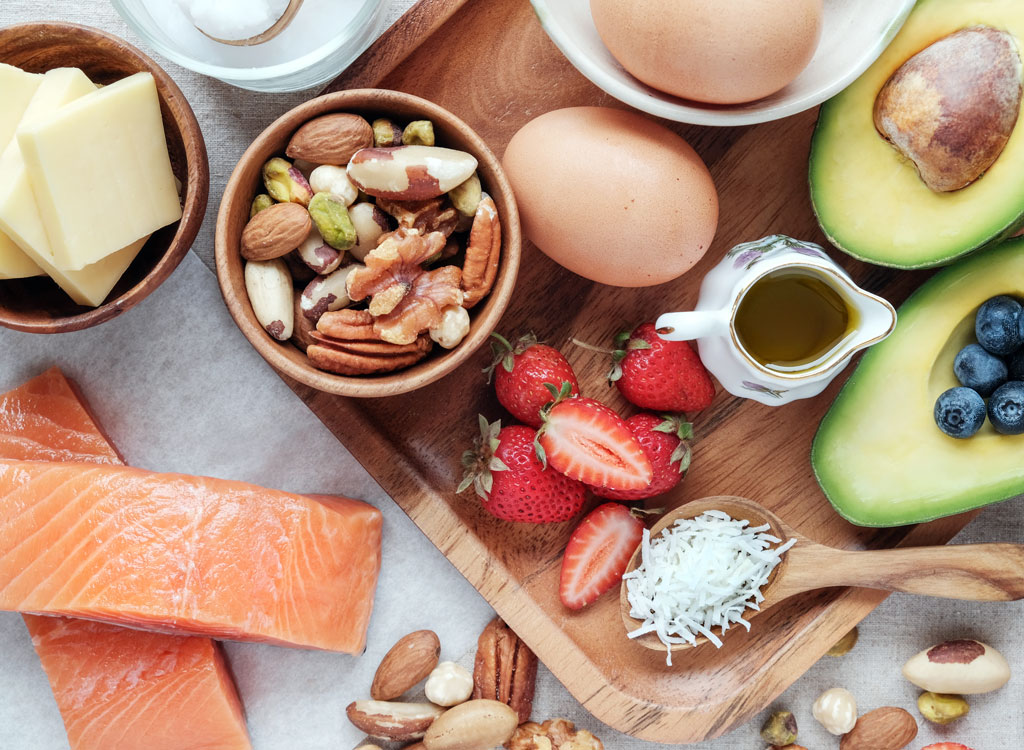
Your daily guac habit texted: She’s glad you’re in love, but hoping you’ll add some more healthy fats to your routine. “Instead of trying to eliminate fats from your diet, focus on incorporating more healthy ones. Simply swapping mono- and poly-unsaturated fats for saturated and trans fats can have a significant impact on your health. Mono- and polyunsaturated fats are found naturally in olive and canola oil, nuts, seeds, fatty fish, olives, and avocados; they are considered healthy fats as they have been shown to raise your ‘good’ cholesterol (HDL) and promote heart health,” explains Miller. “Saturated and trans fats are considered unhealthy fats as they are associated with an increased risk of heart disease. They are often found in high-fat dairy foods, such as butter, cream, and cheese, as well as meat and heavily processed foods.”
Get Used to Saying ‘Hold the Sauce, Please’
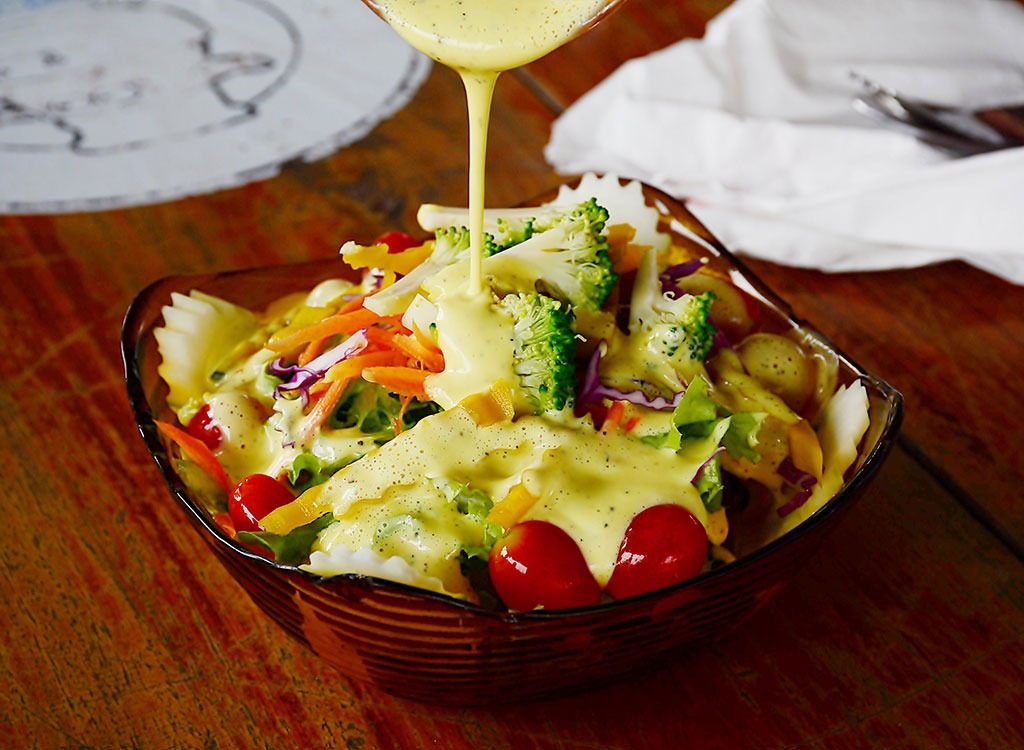
This four-word phrase is a must-do when it comes to clean eating. “Have sauces and dressings served on the side, so you can control the amount you eat or skip them completely,” says Kotsopoulos. “If it’s a cream or butter sauce avoid it completely and use fresh lemon juice and olive oil instead.”
Attention: Avoid Processed Fat-free Foods at All Costs
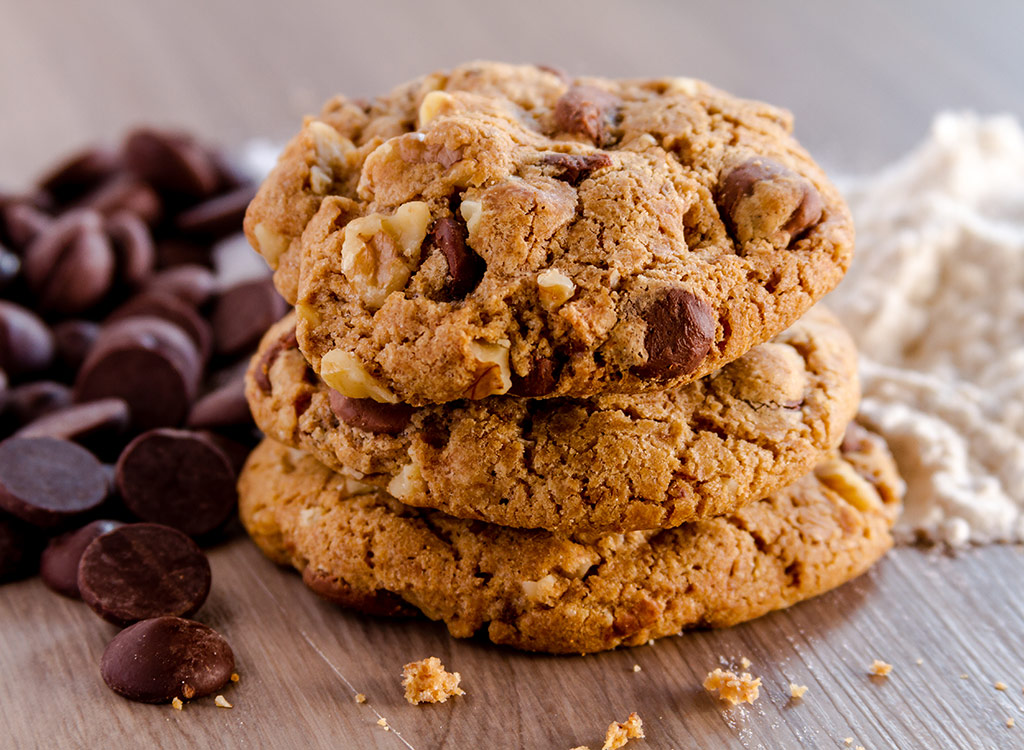
Snackwell cookies, we’re looking at you. “Overly refined foods, especially refined carbohydrates like fat-free cookies, cakes or chips, can trigger inflammation and actually make you hungrier through the day. Instead, choose high-quality whole food—for snacks try nut butter and fruit or celery, or enjoy an occasional cookie made with higher quality ingredients—like real butter (grass-fed organic, even better), and organic whole grains,” suggests Kay.
Be a Smarter Meat-eater
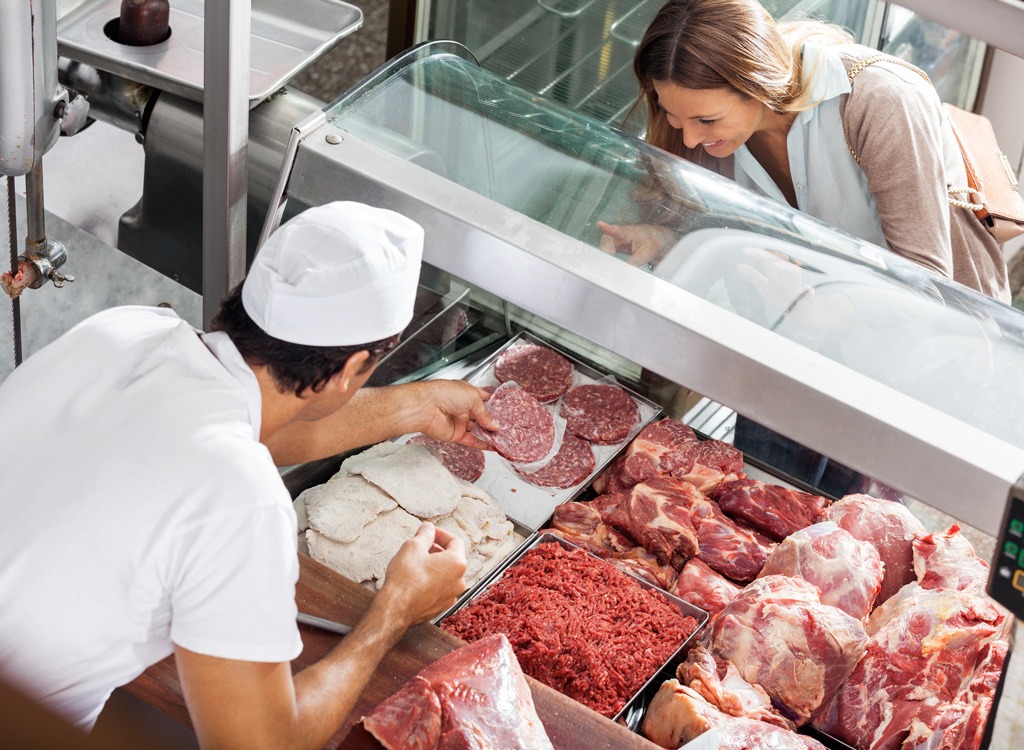
C’mon, you’re getting bored of that daily grilled chicken breast anyway. “Clean meat may be one of the most important trends. Organic meats and meat free from antibiotics and hormones are simply better choices. More manufacturers are catching onto this as the sourcing of meat becomes more transparent. As many people choose to be vegetarian or ‘flexitarian,’ high-quality meats consumed in small quantities can provide the protein and missing amino acids that many of us need,” says Dr. Taz. “Learn your meat ‘story,’ get meat smart and limit the amount of meat consumed daily. One serving of meat per day is often enough for us all.”
Have a DIY Desserts Rule

“If you are going to indulge in a sweet treat, make it yourself,” says Bedwell. “That way you are using real, whole food ingredients (such as eggs, butter, and flour) rather than the ingredients that are often in packaged, processed treats (such as partially hydrogenated oils, preservatives, and high fructose corn syrup).” Serious sweet tooth? Familiarize yourself with these dessert survival strategies and never cry chocolate chip tears again.
Always Order One Vegan Item when Dining Out
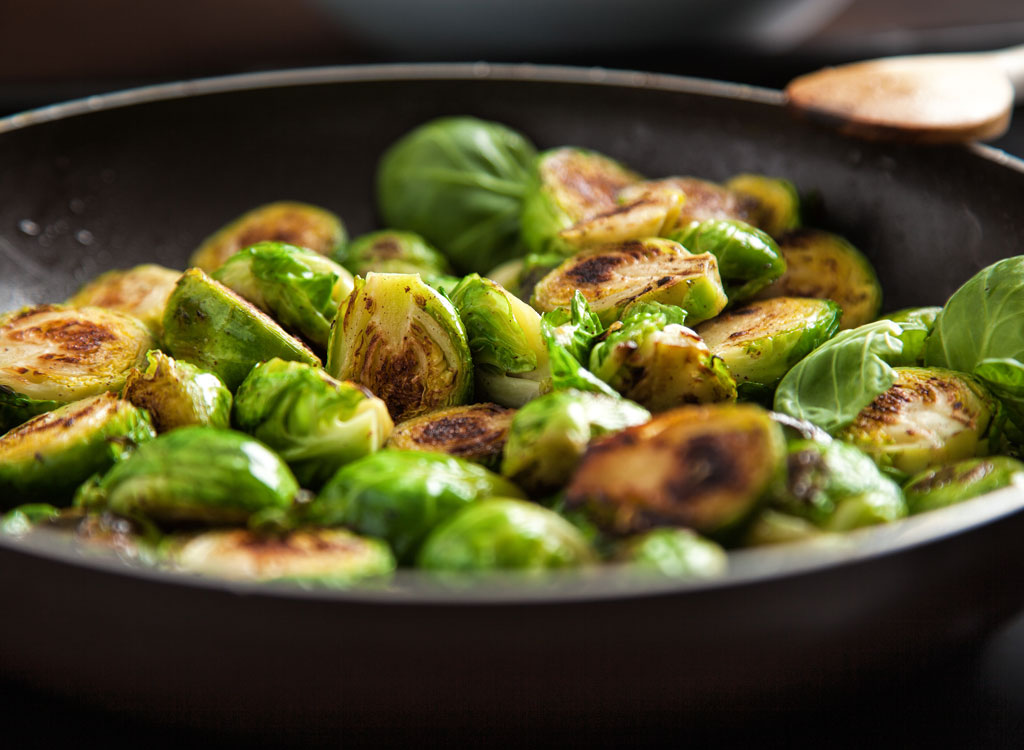
Maybe it’s your entree, or maybe it’s just asking for that string bean and sundried tomato dish to be sauteed in olive oil instead of butter. But always shoot to consume at least one plant-based item when you’re at a restaurant. Not only will it help quell overeating on other stuff (vegan options tend to be heavy on fiber) but it’s a boon for your health. “Plant-based foods are loaded in vitamins, minerals and antioxidants that help your body function optimally,” says Kotsopoulos.
Choose Fruit Over Juice
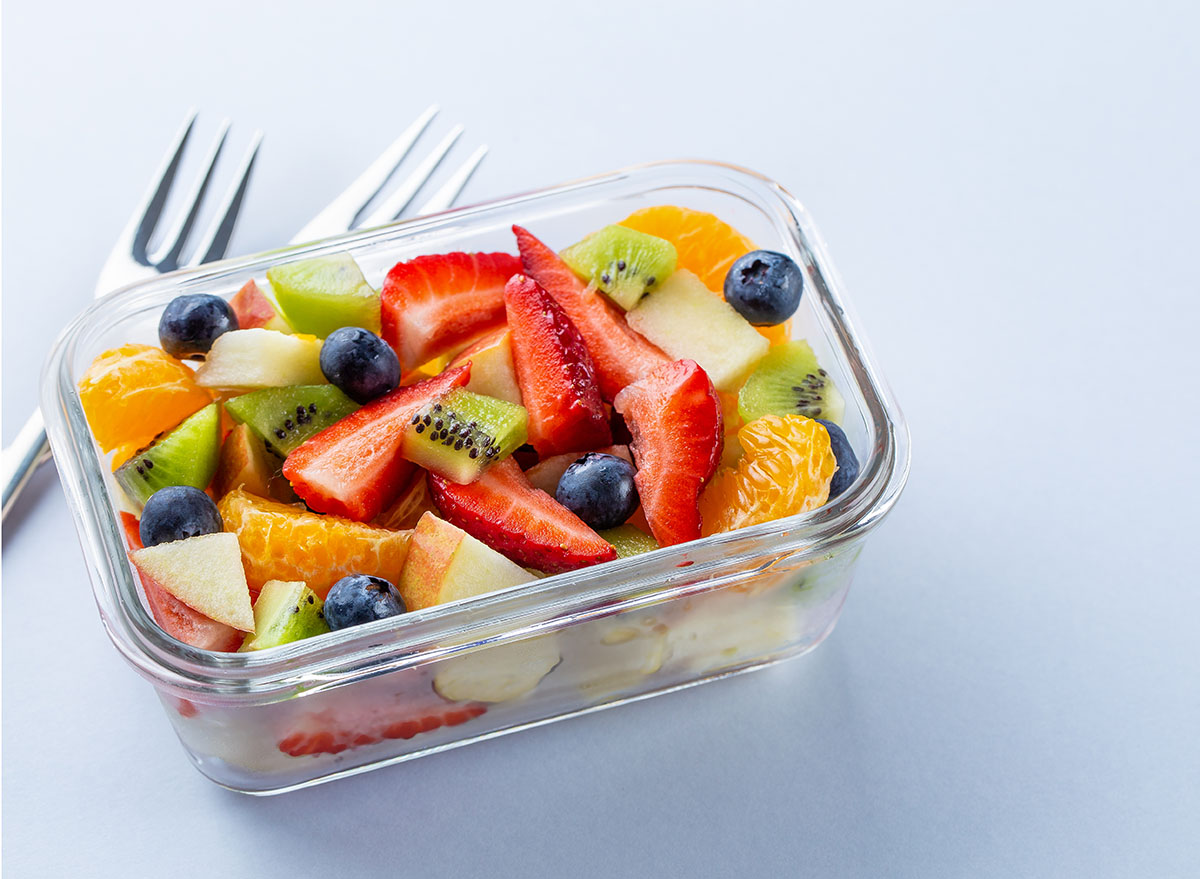
“Many of us get deluded into thinking clean eating is drinking more juice,” says Dr. Taz. “Always choose whole fruit over any fruit juice, to gain benefits from eating the fiber and allowing the digestive process to absorb the nutrient from the fruit.” An apple will work wonders to fill you up before a meal. A glass of apple juice? Not so much.
Make a Better Cup of Coffee or Tea

“Replace sugar in your coffee or tea with cinnamon, which actually lowers blood sugar levels,” suggests Kotsopoulos. “Sugar is of the top causes of weight gain—especially around the midsection. Plus it suppresses your immune system and affects mood.”
Stop Drinking Diet Soda

Drinking diet soda for your harmless sweet-fix? Sorry, guys, but you just gotta give it up. “Diet soda might be calorie-free, but that super-sweet flavor [seduces your brain big time.] People who drink diet soda tend to get hungrier for sweets, and over time, have greater waist circumference (that’s science-speak for bigger bellies),” offers Kay. You might find it easier to go “cold turkey” than cutting back to one a day, but do whatever works best for you.
Add Spice for a Healthier Life
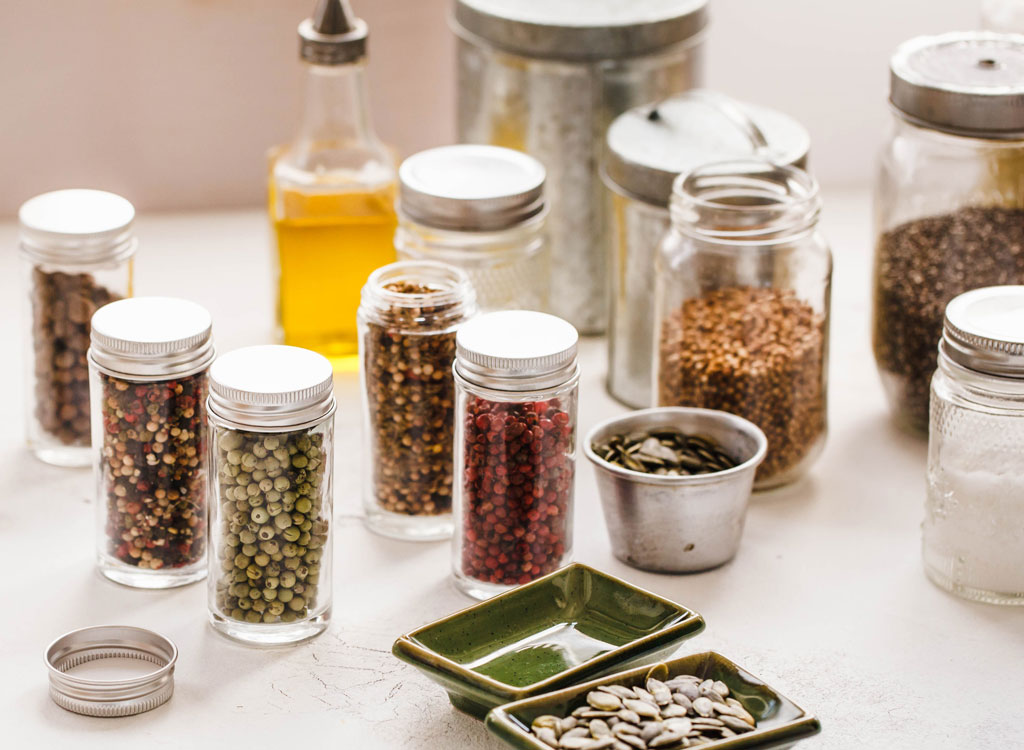
It may have a cutesy-sounding ring to it, but this rhyme means serious business: “Whenever possible, flavor your dishes with fresh and fragrant herbs and spices that pack an antioxidant punch,” suggests Davis. “Herbs and spices that rank at the top of the free radical-quelling antioxidant list include oregano, sage, thyme, rosemary, and cumin.”
